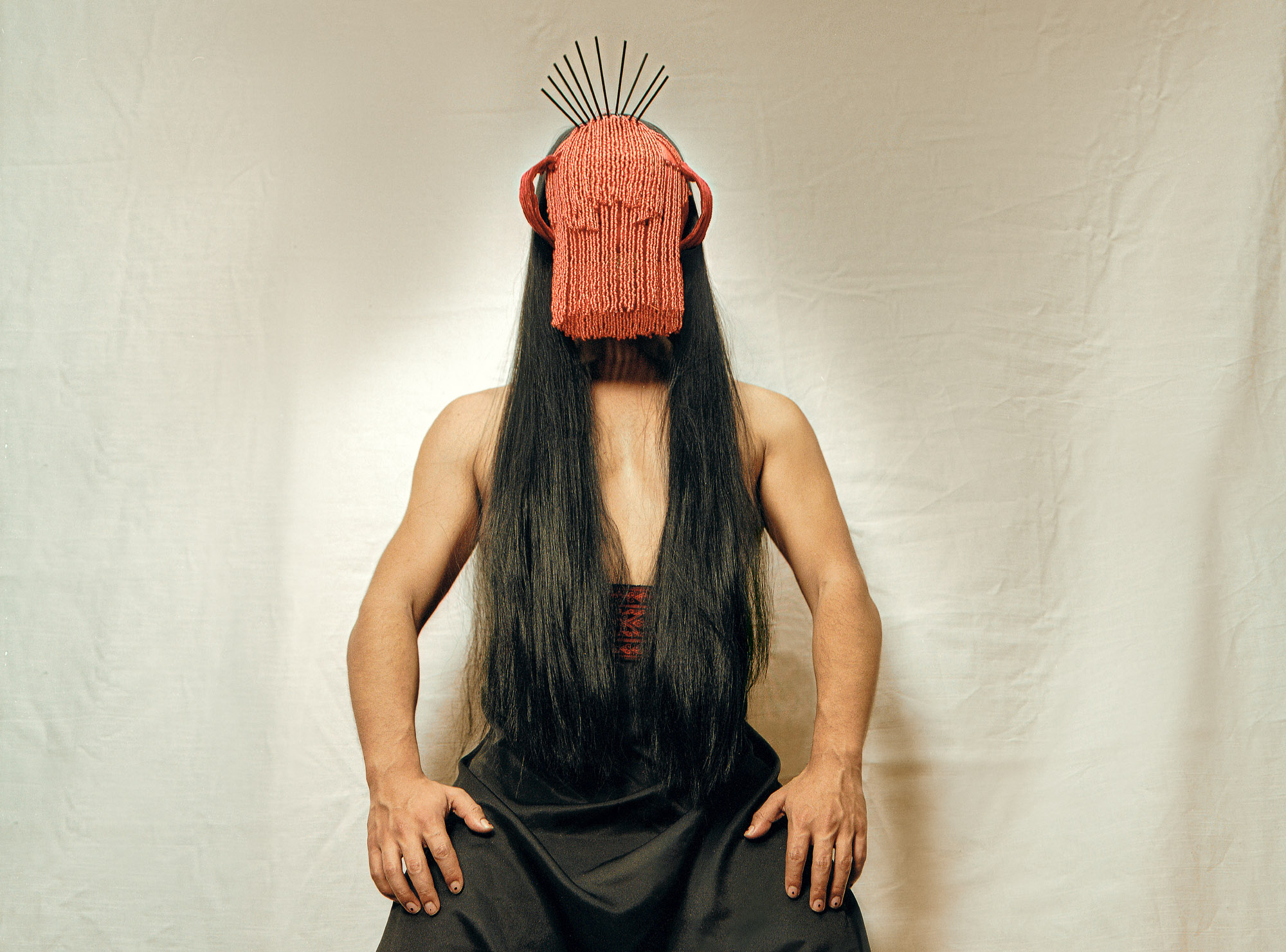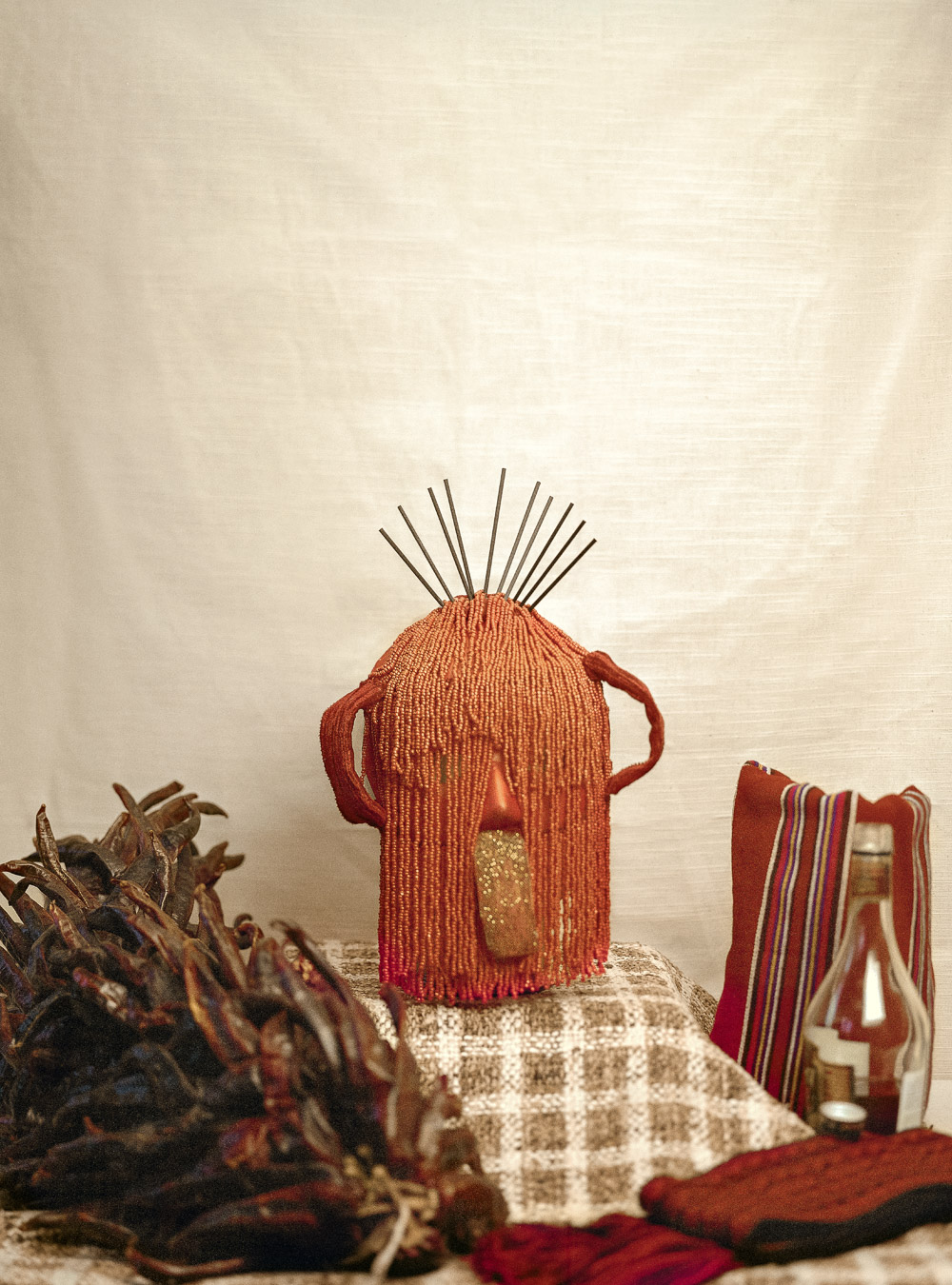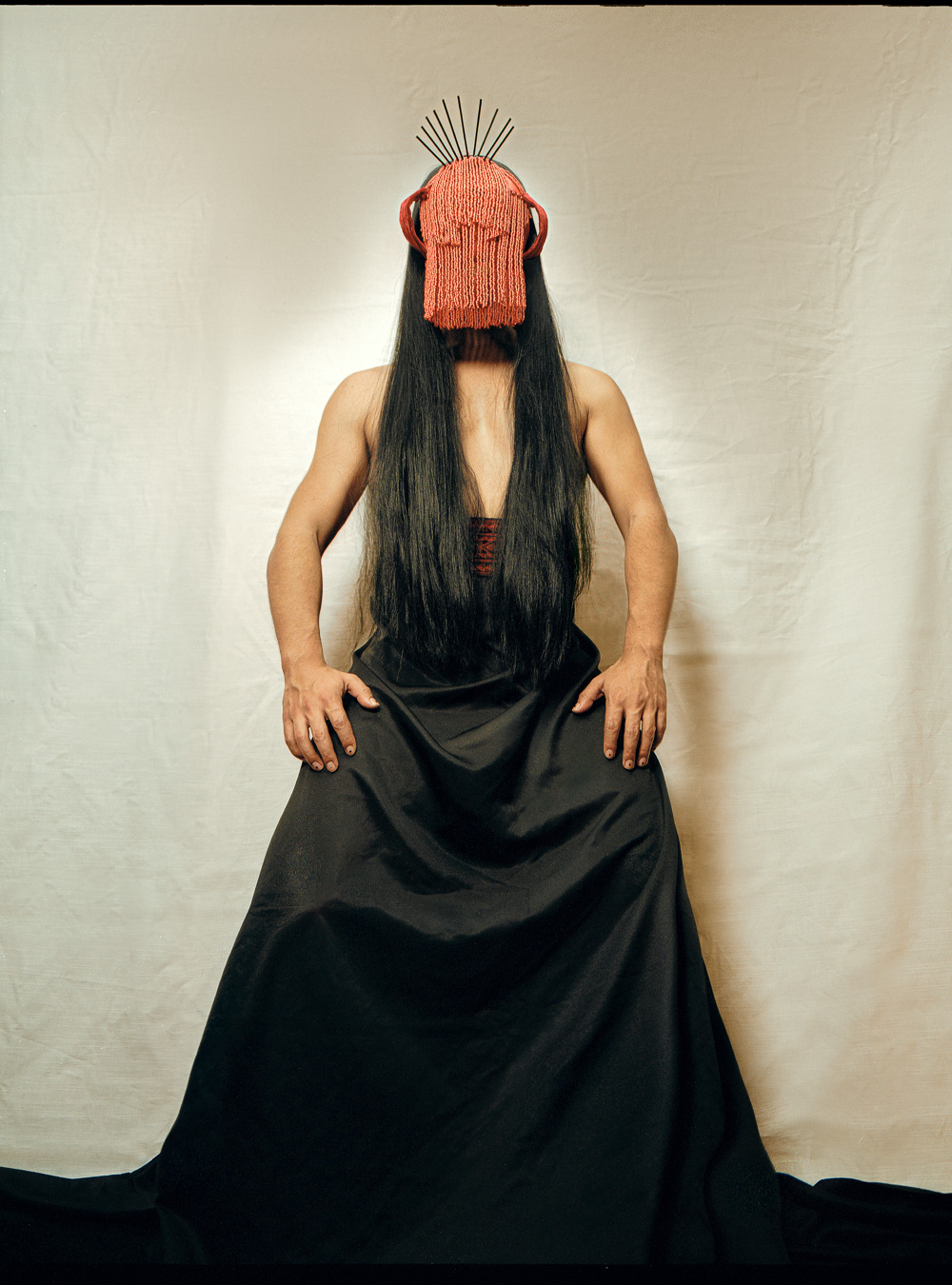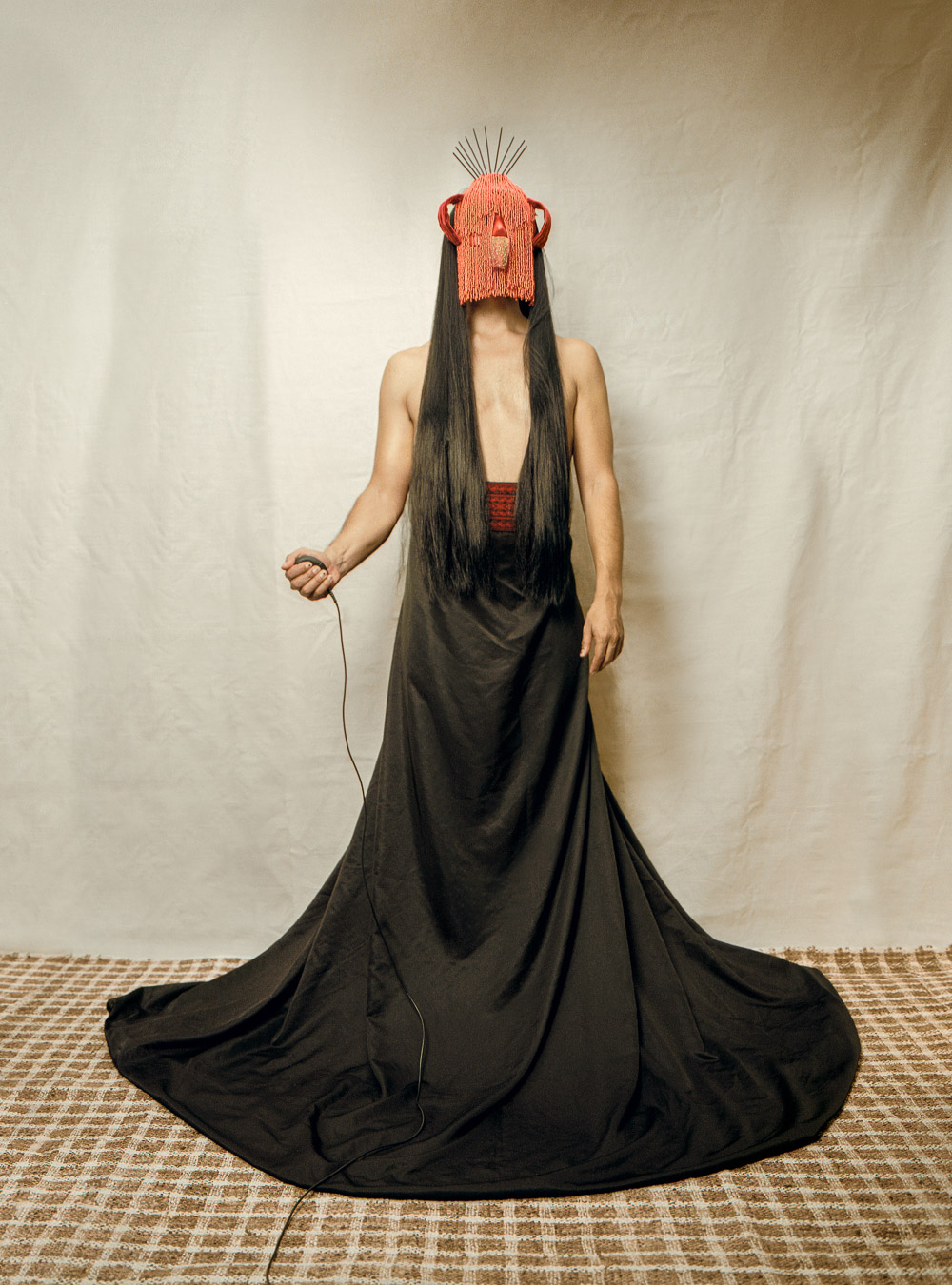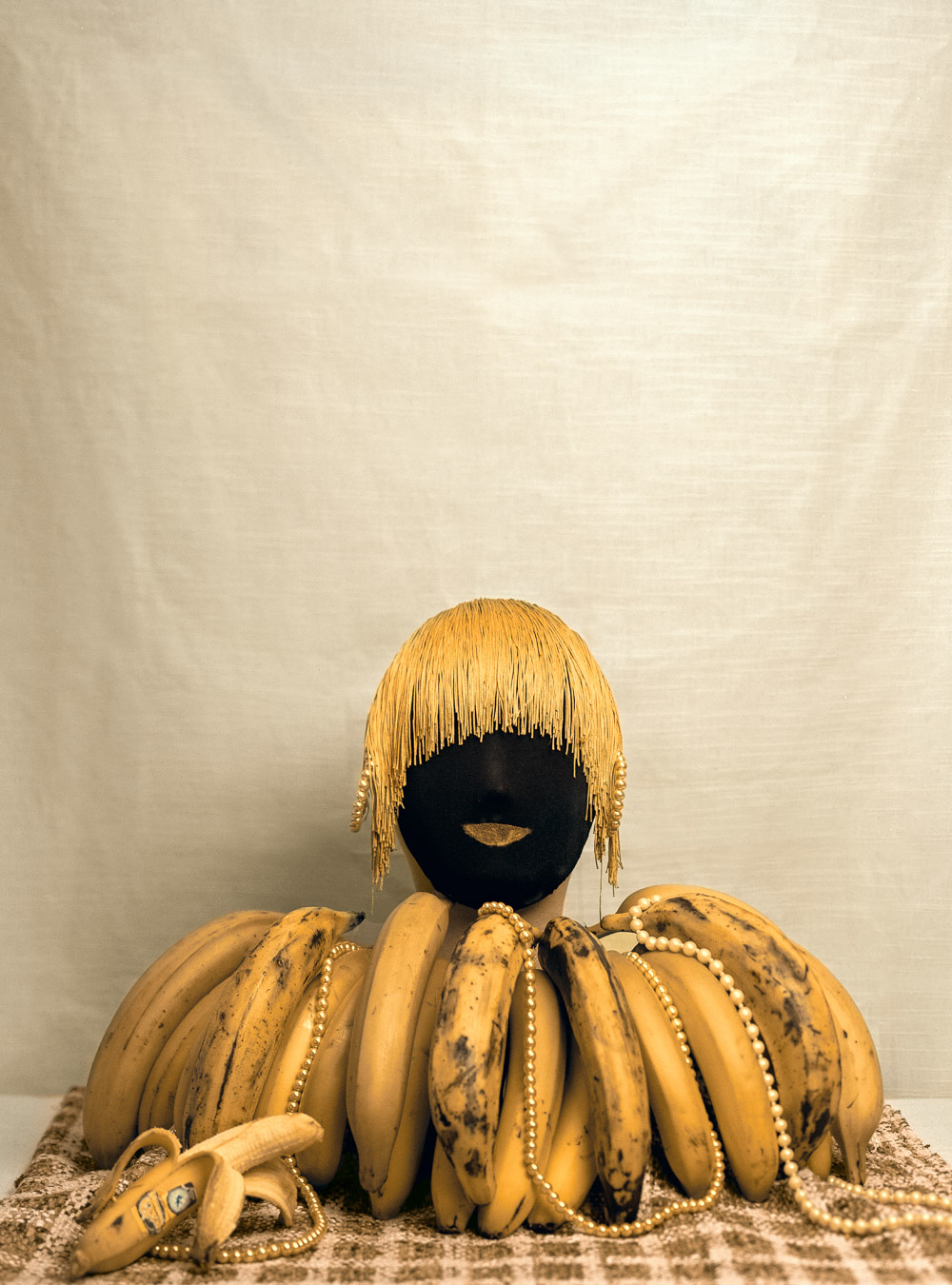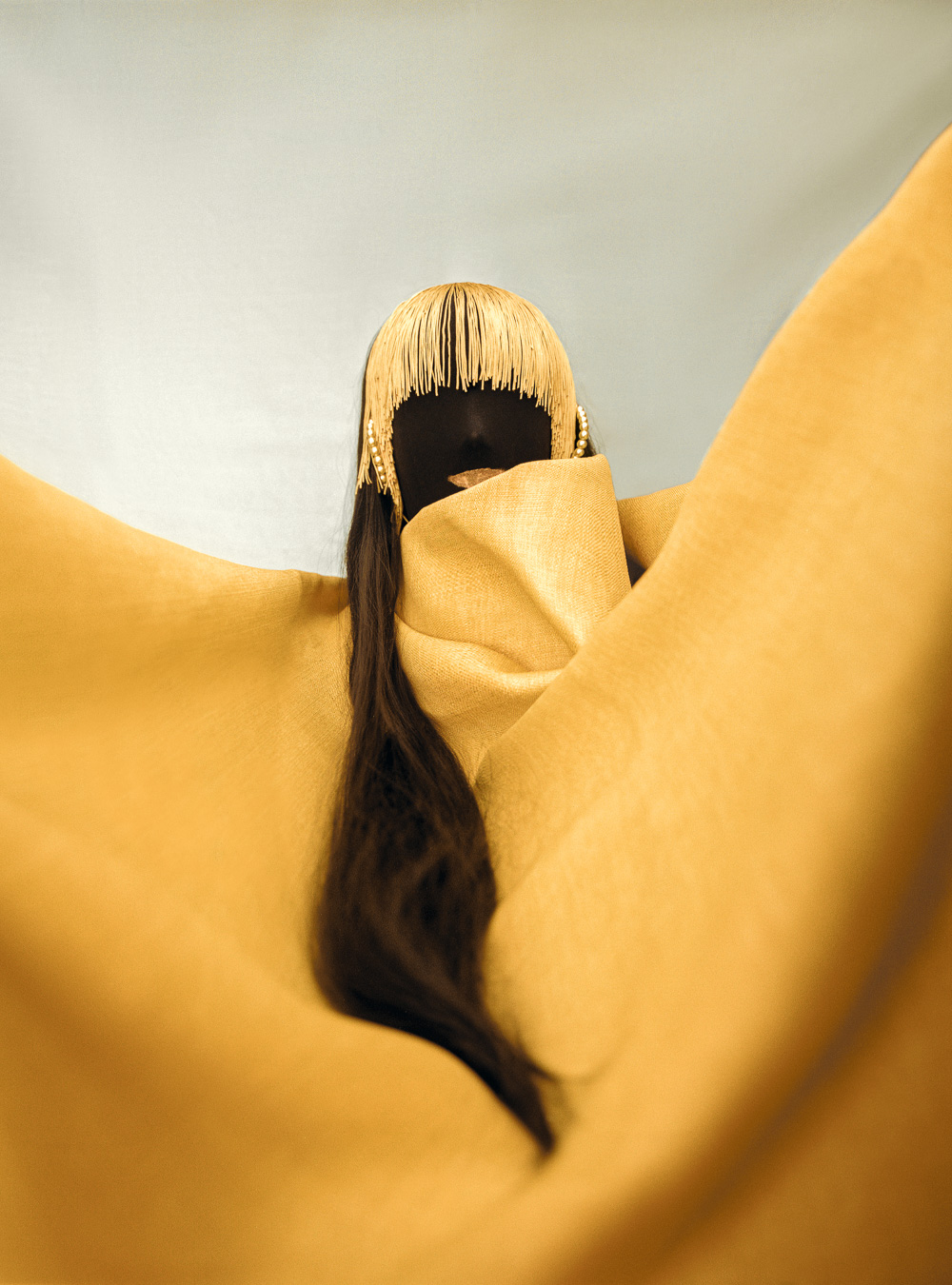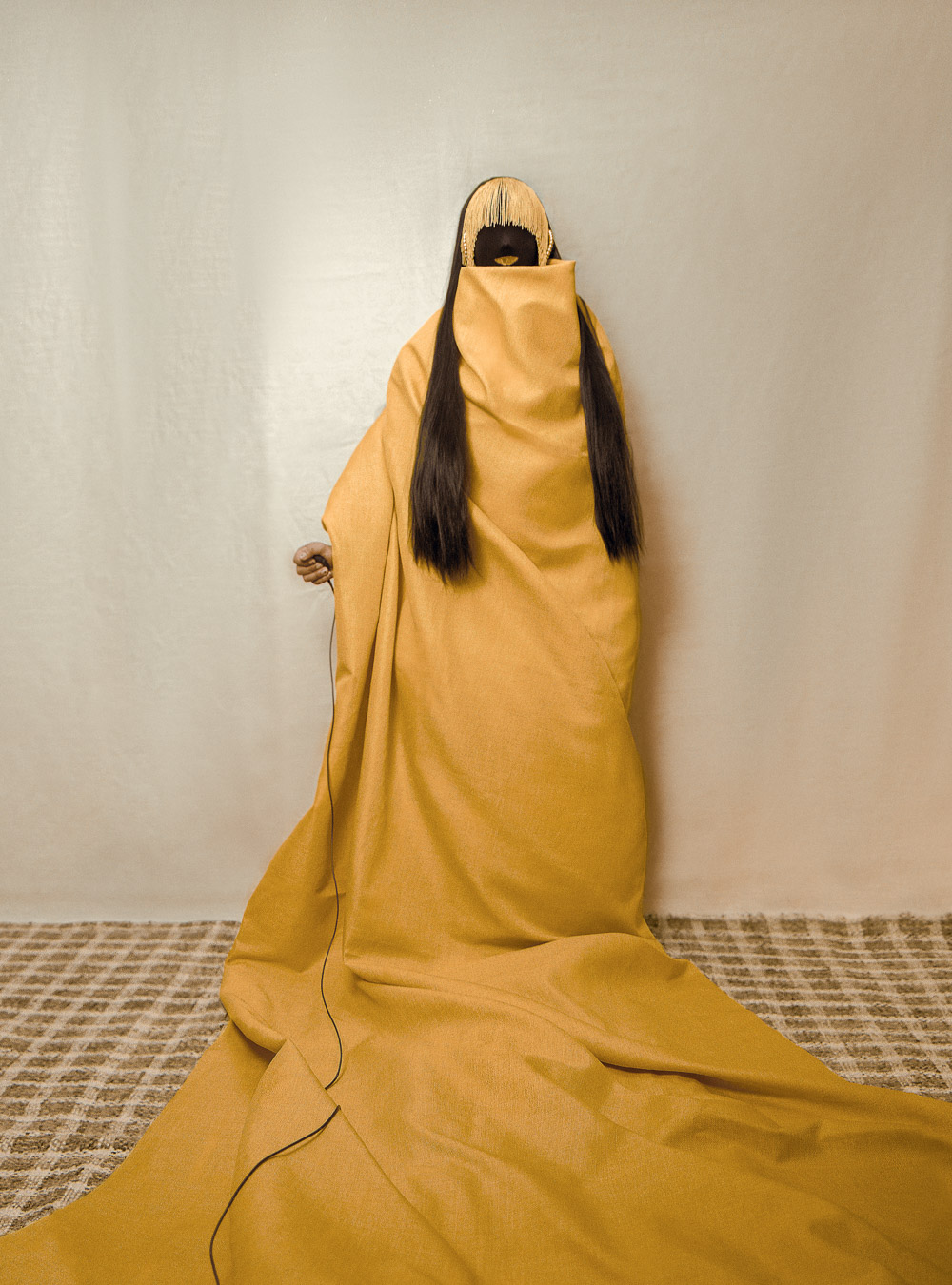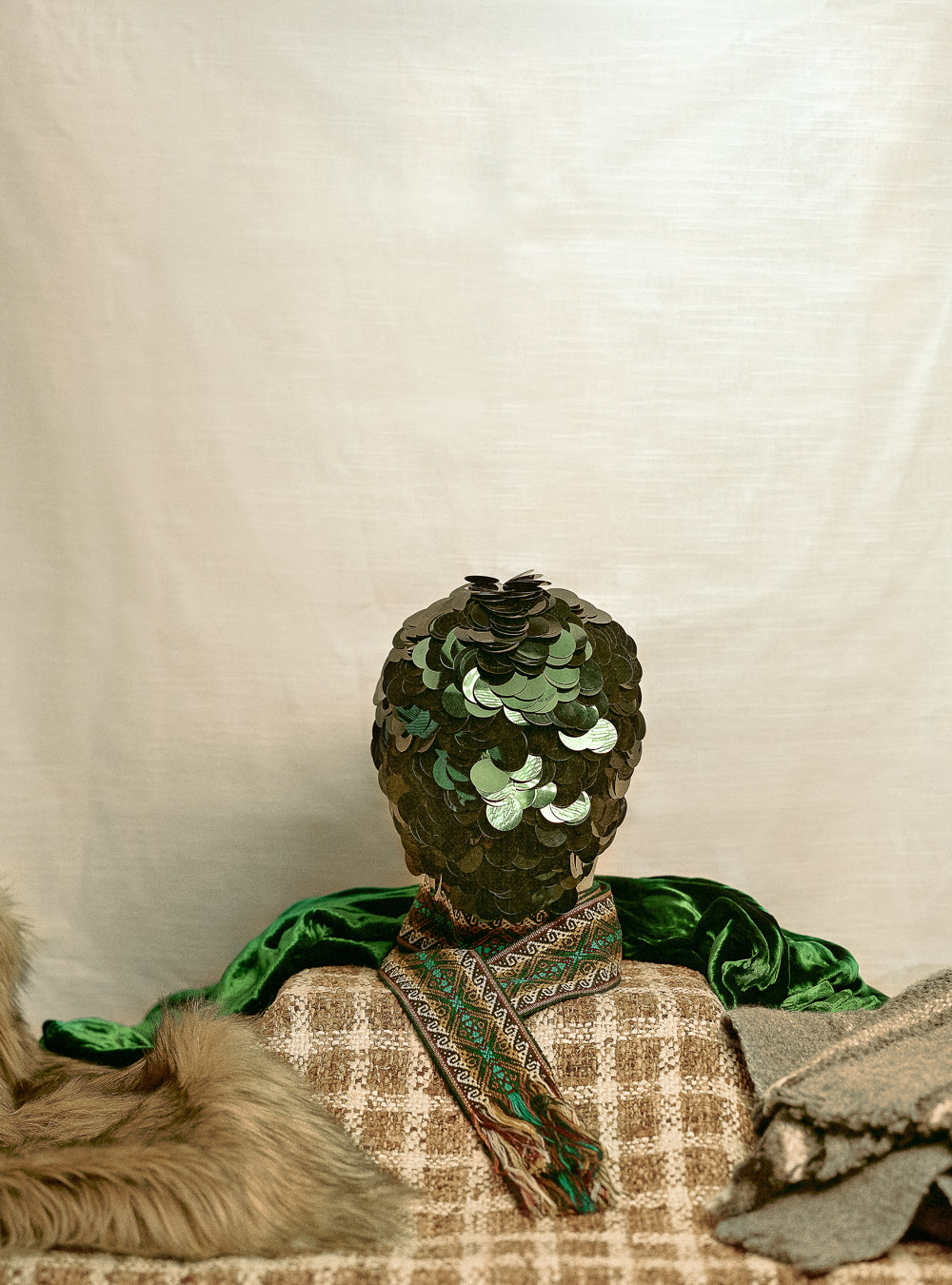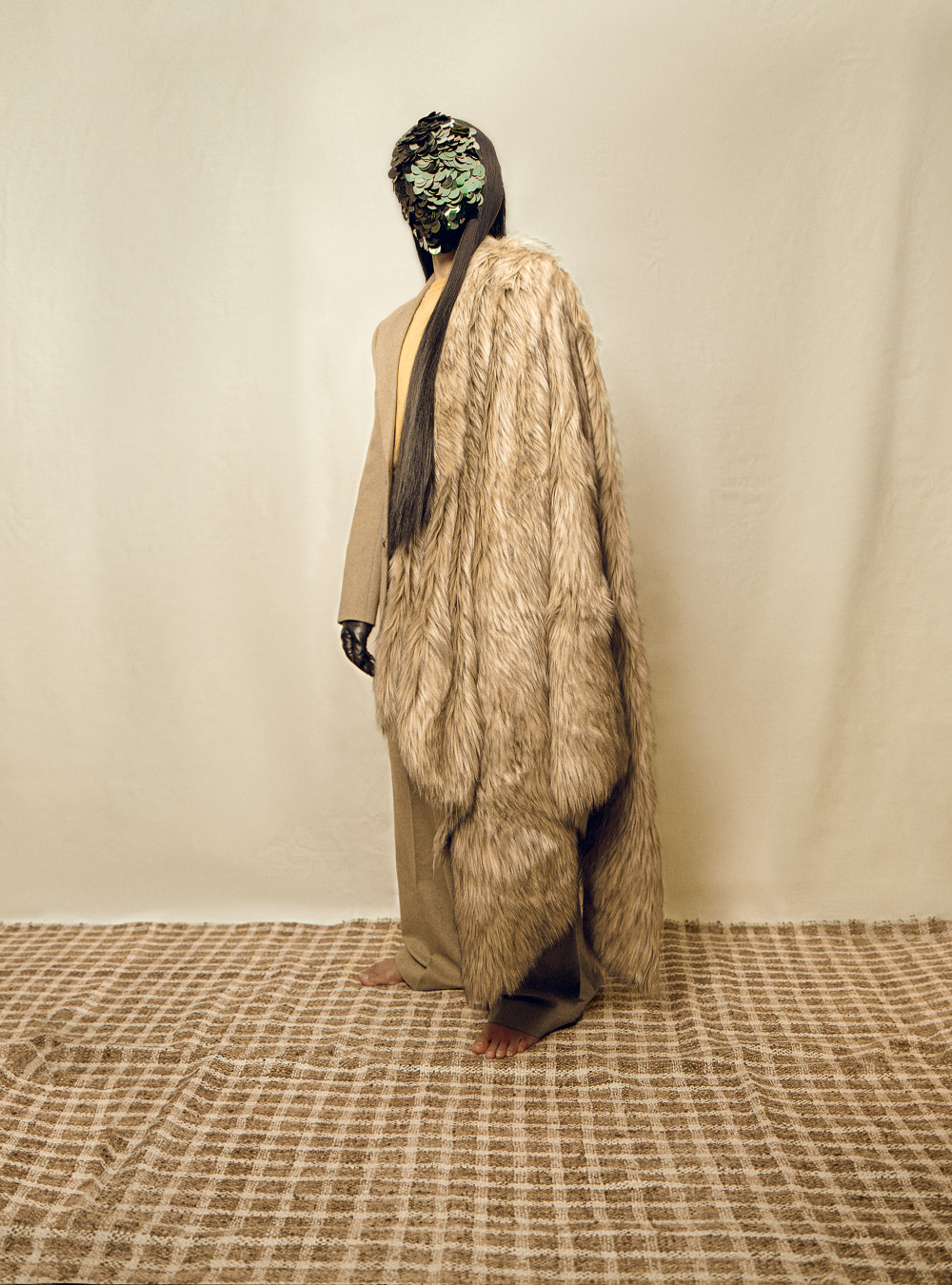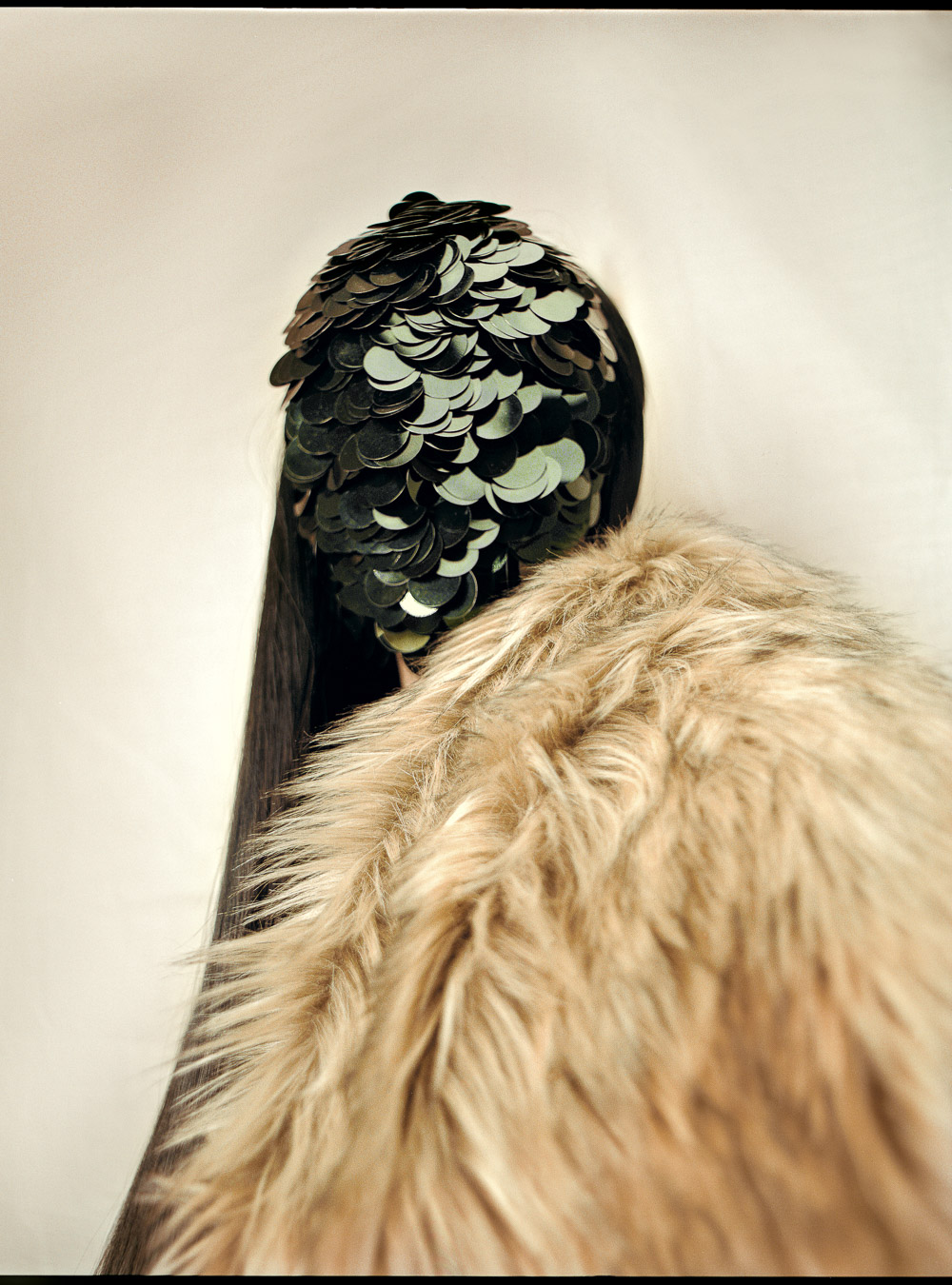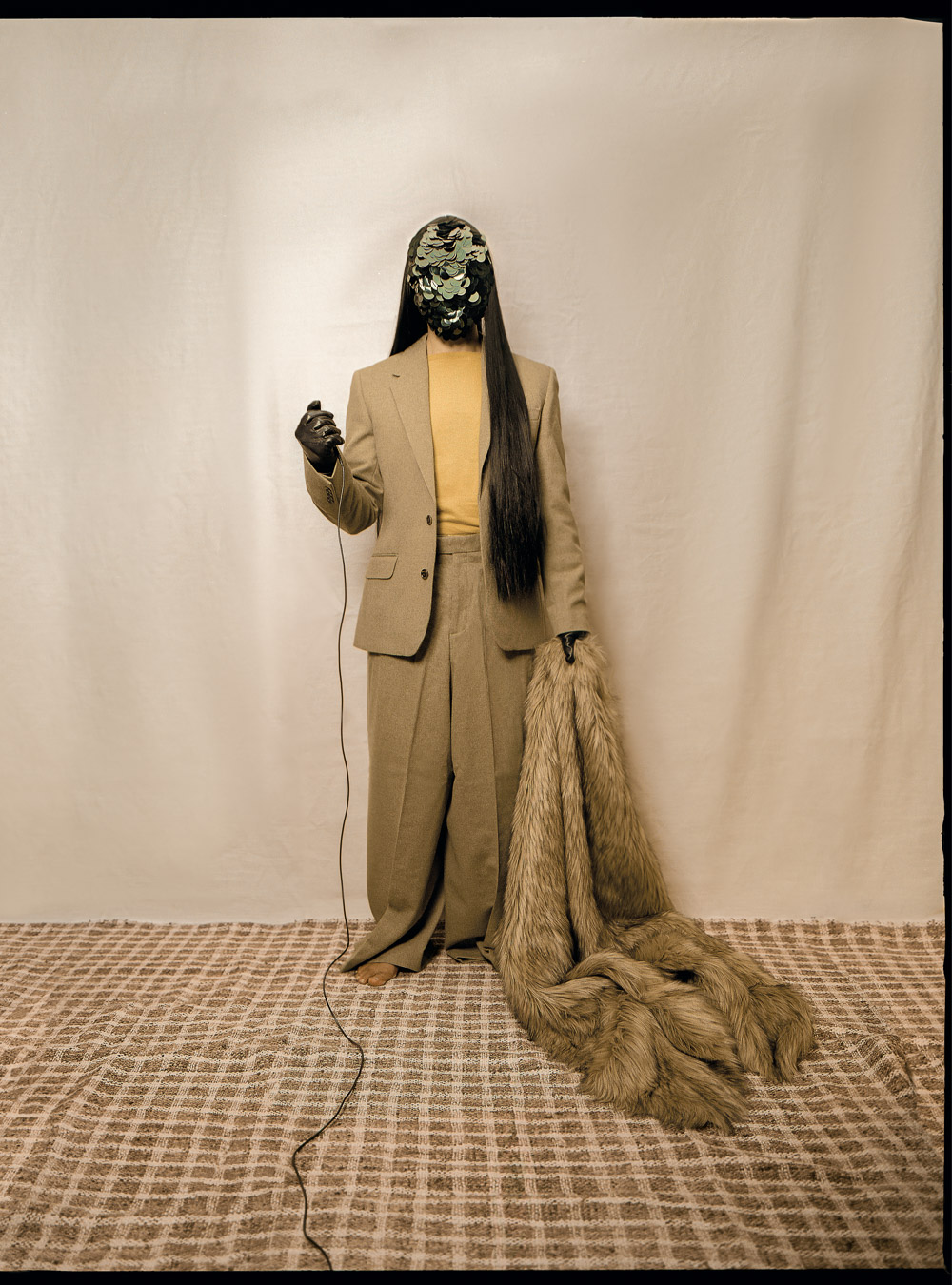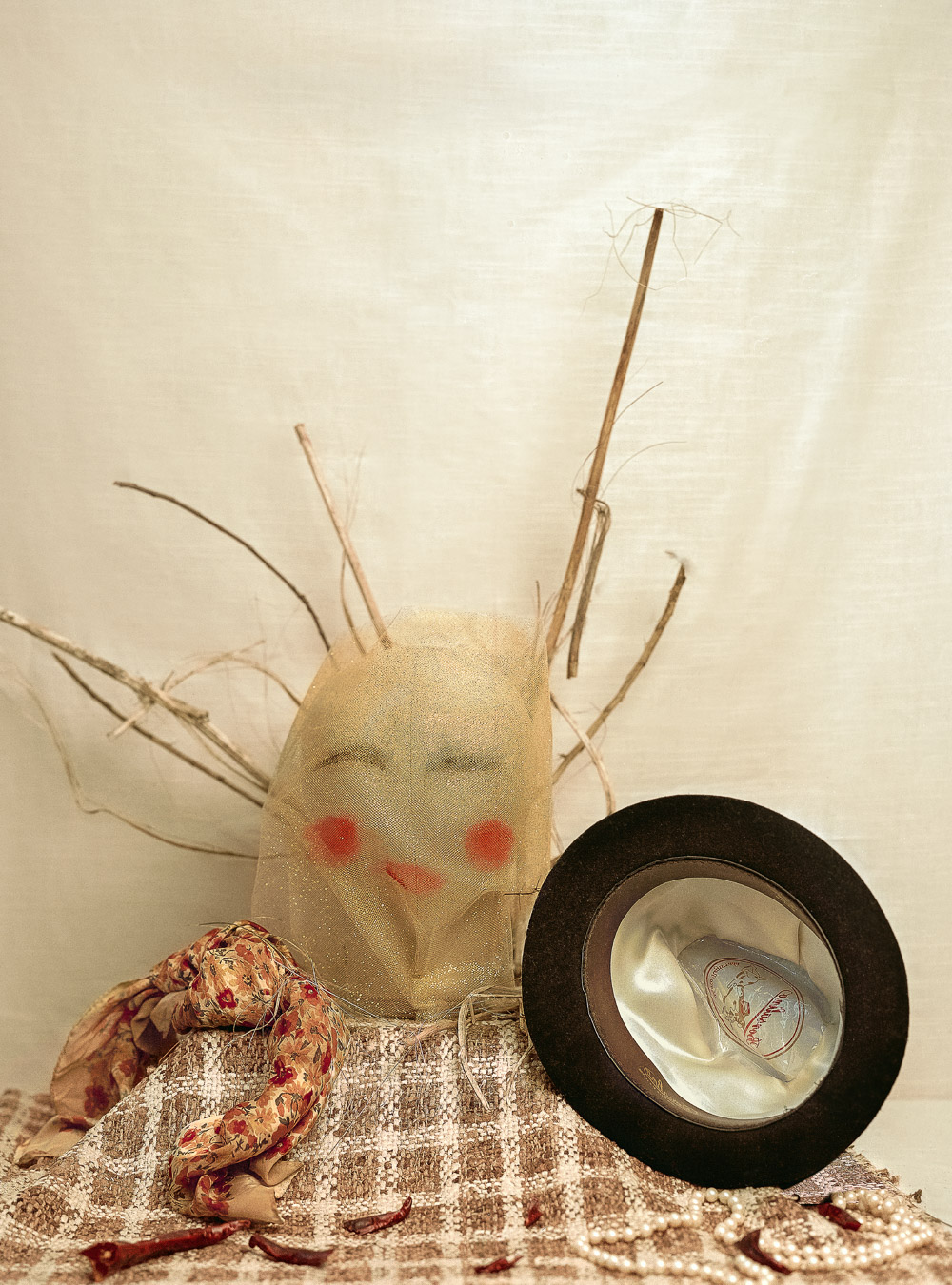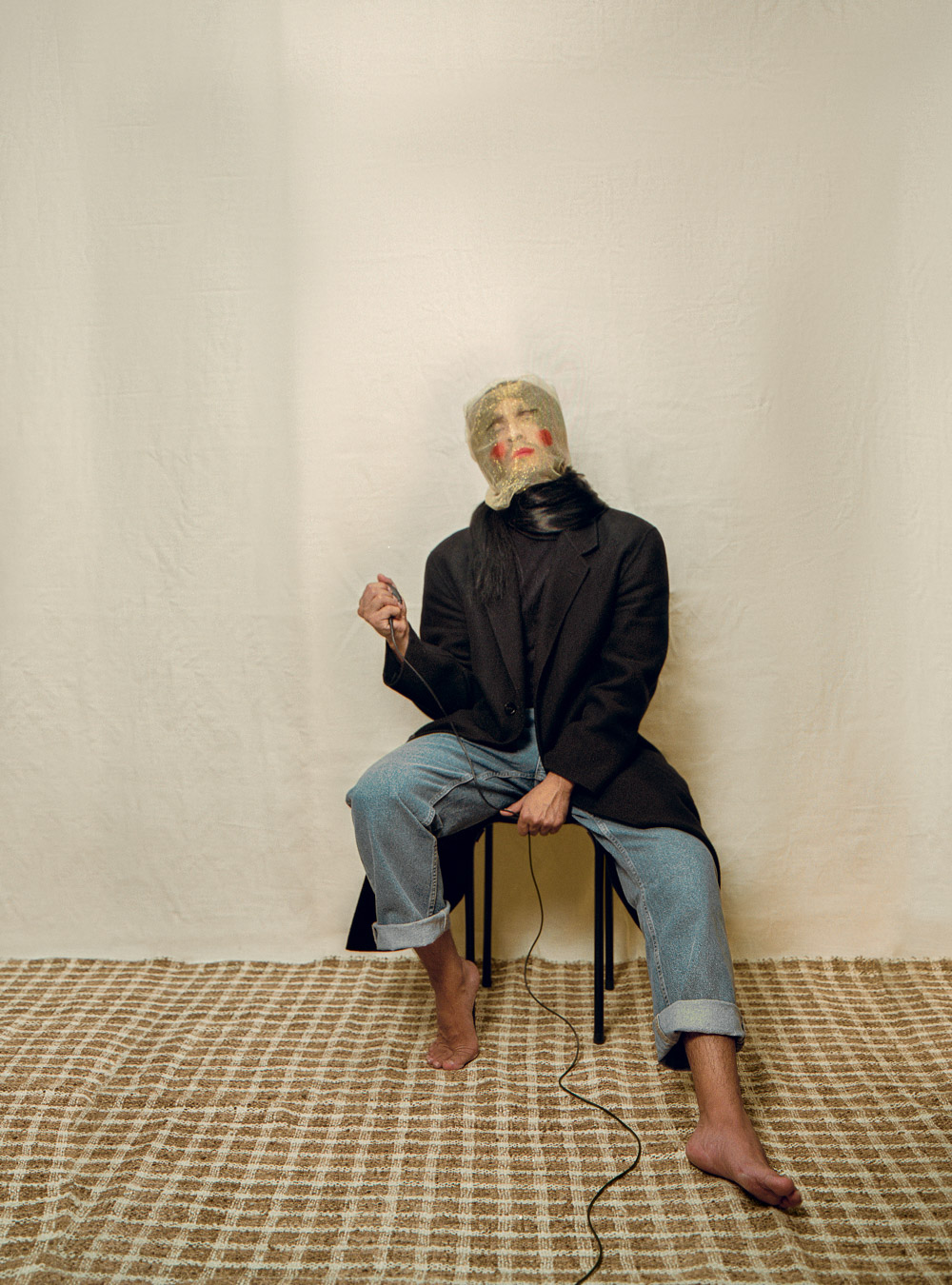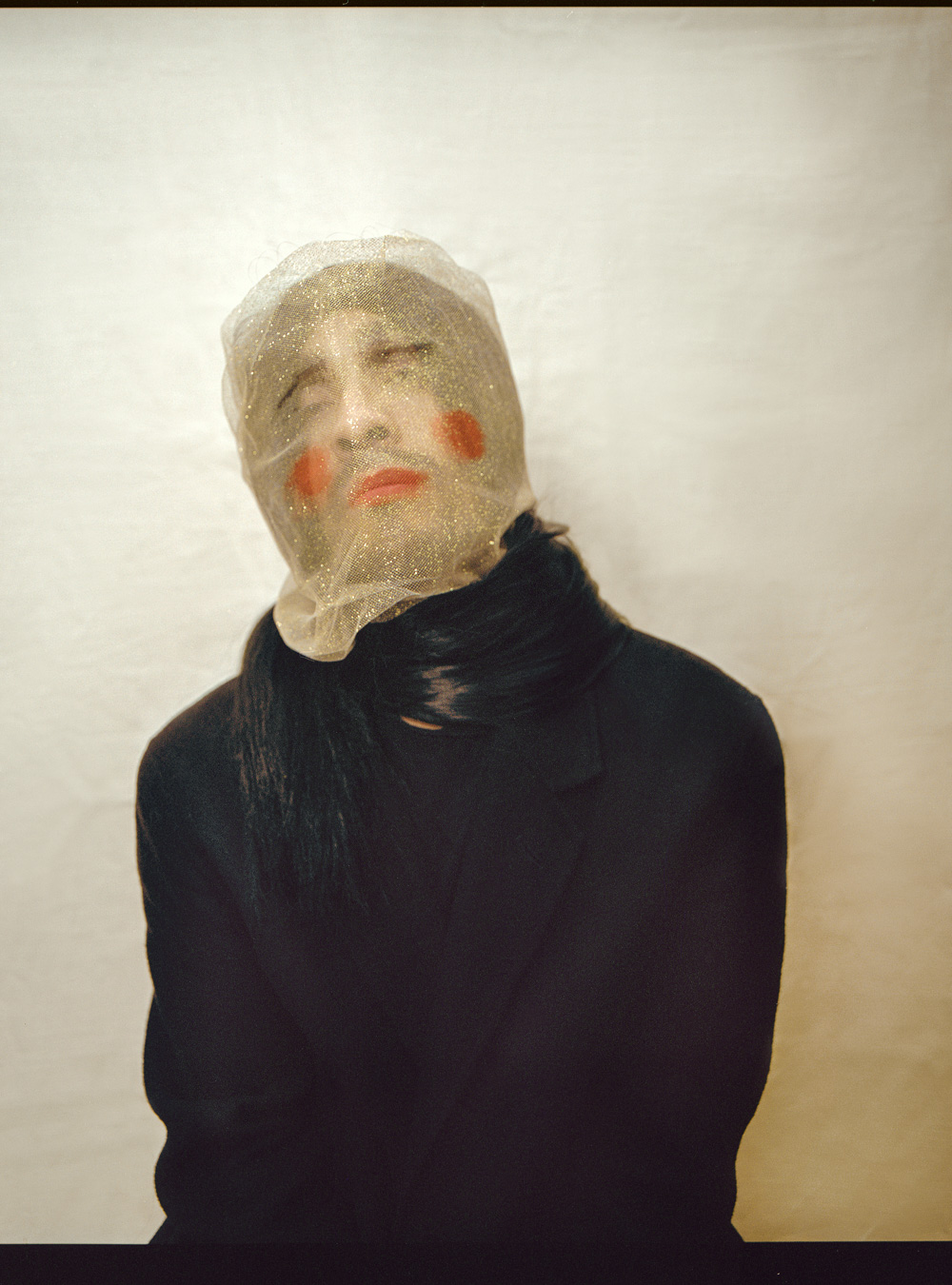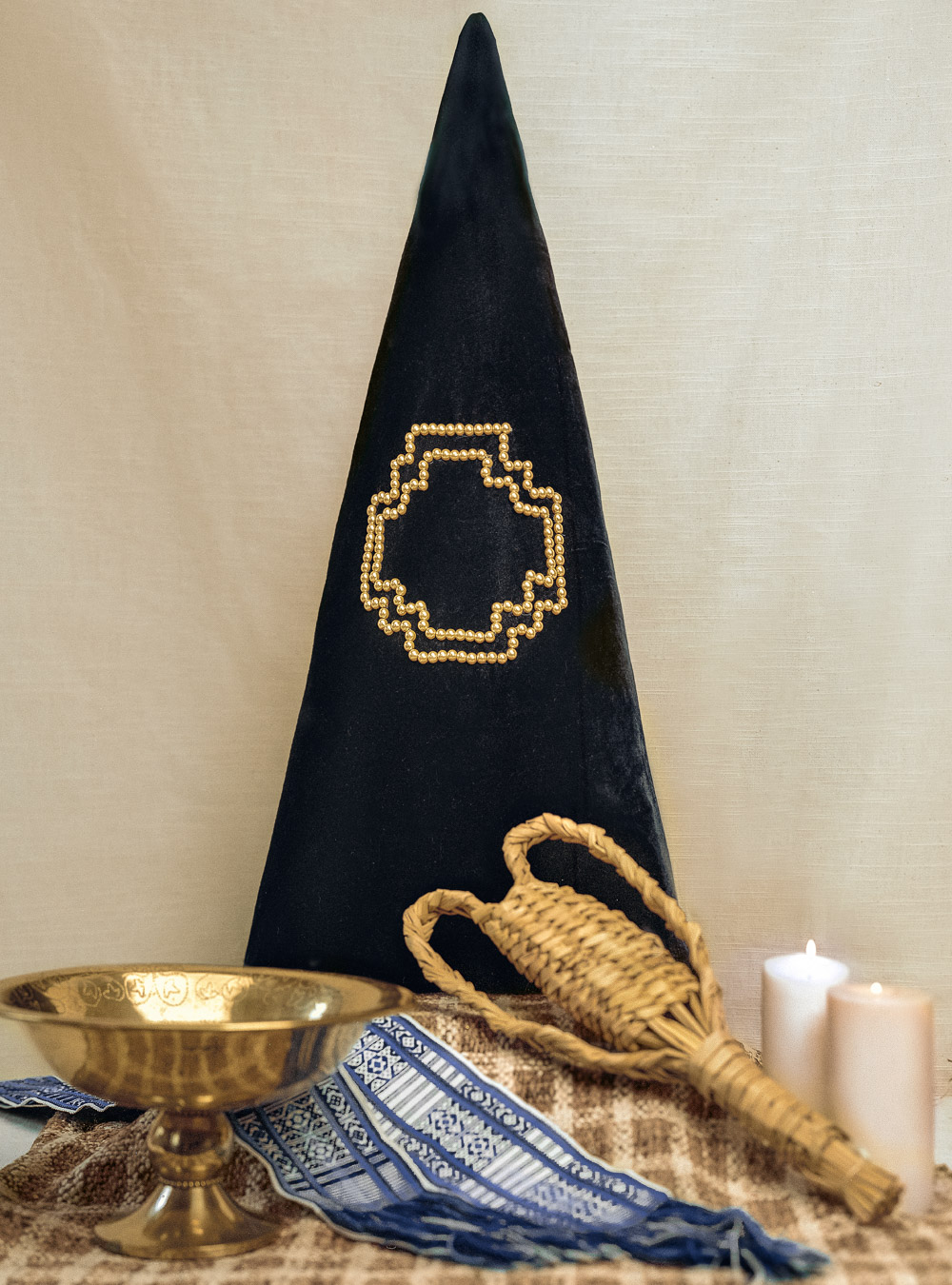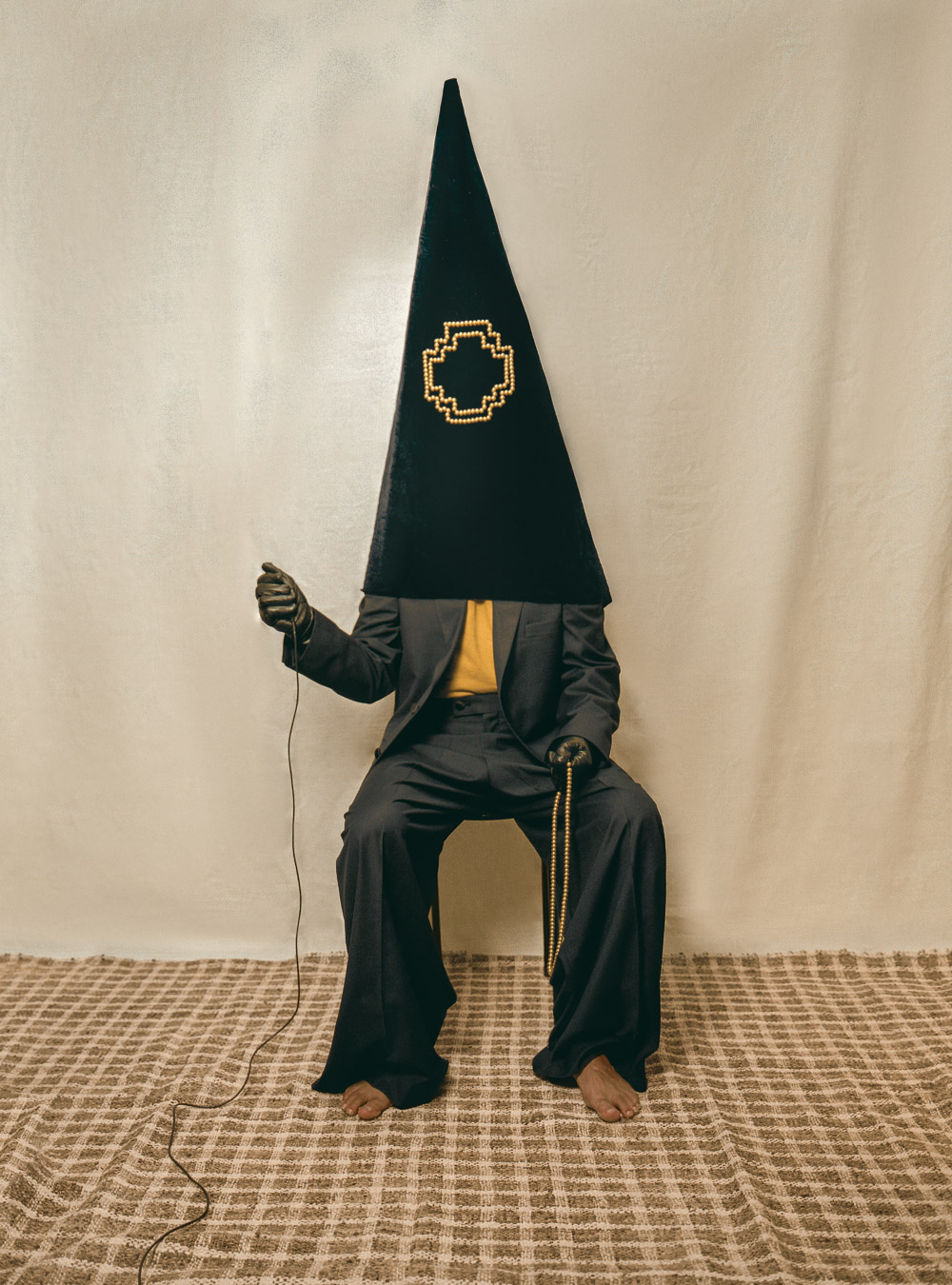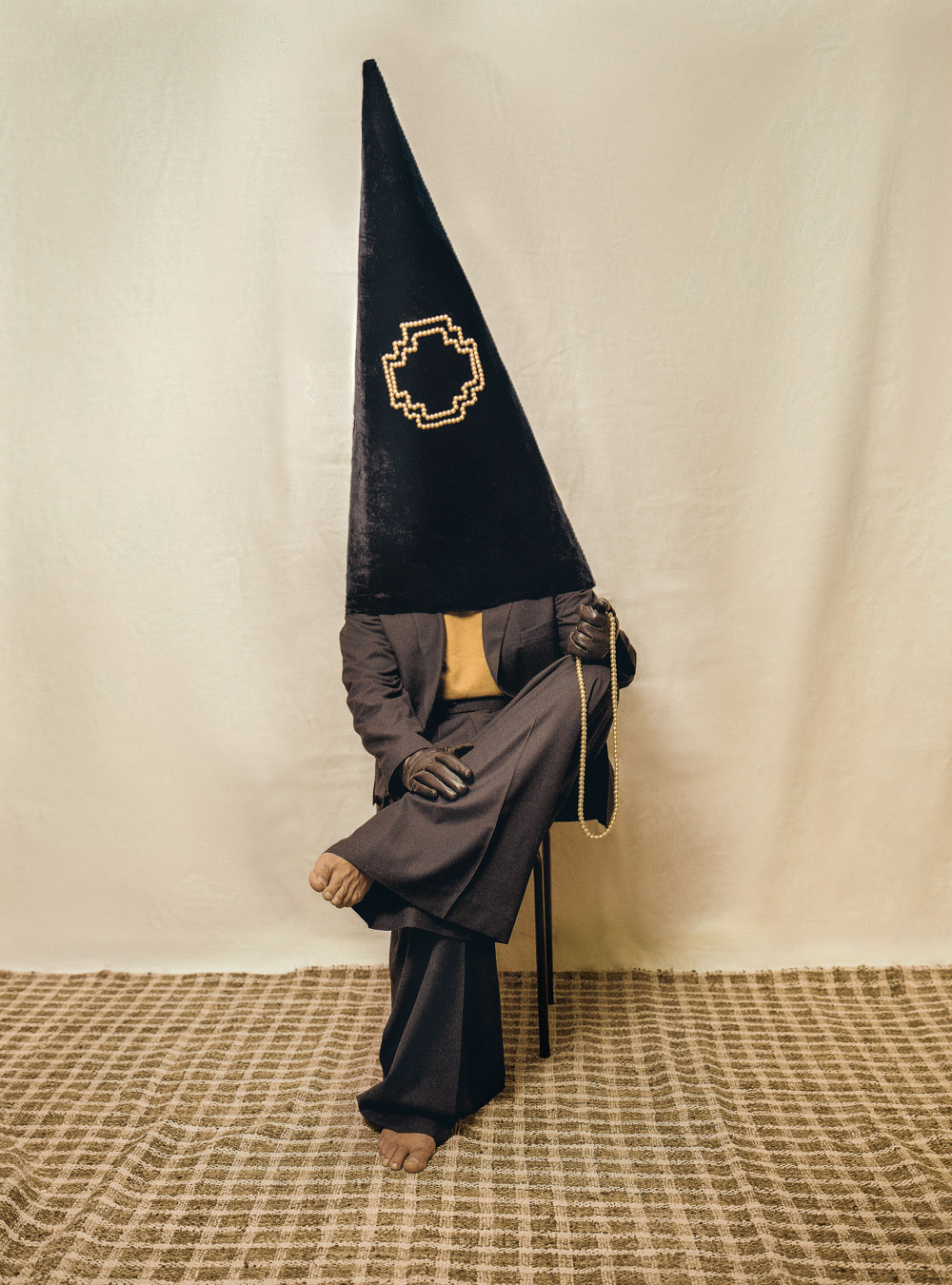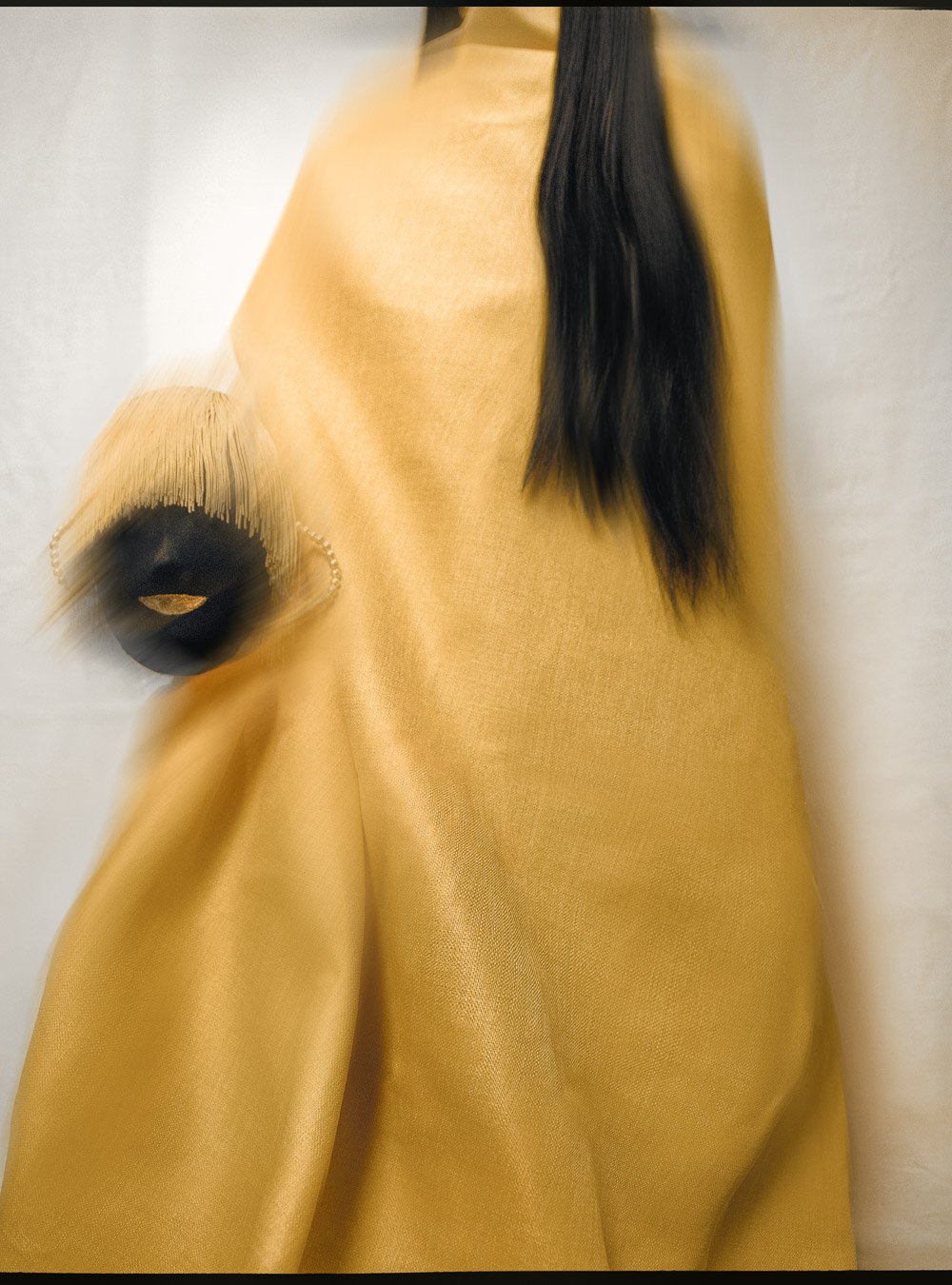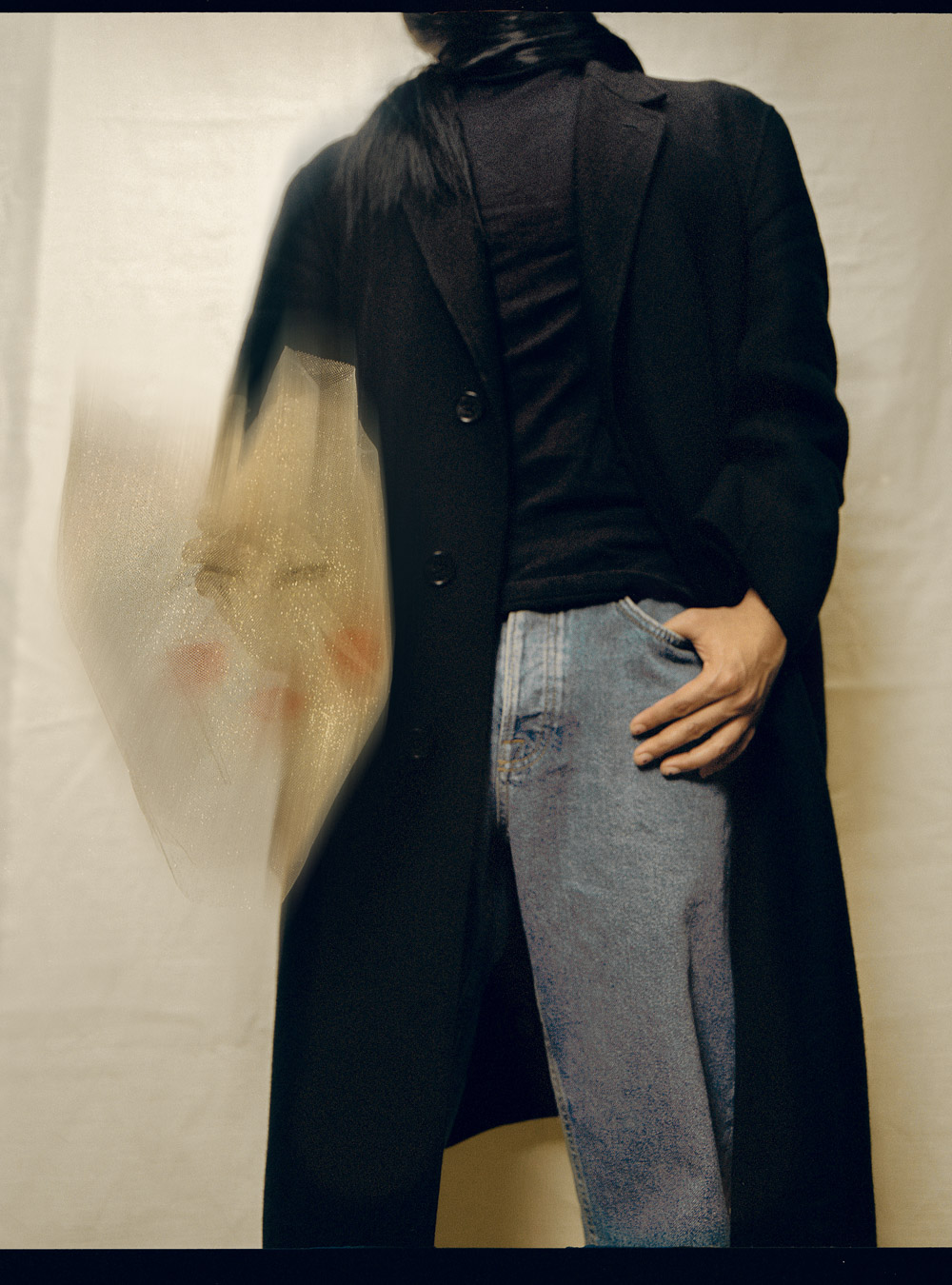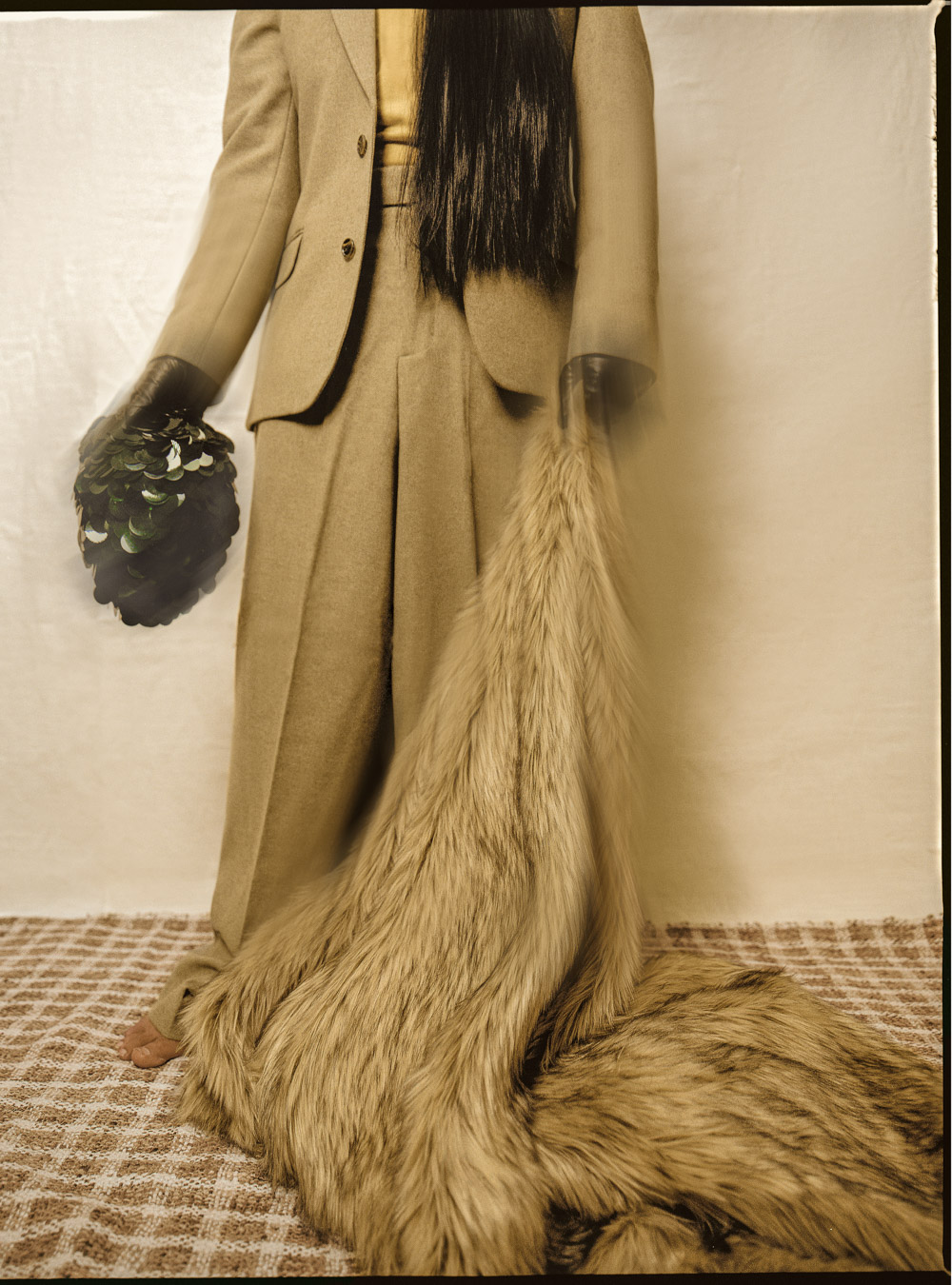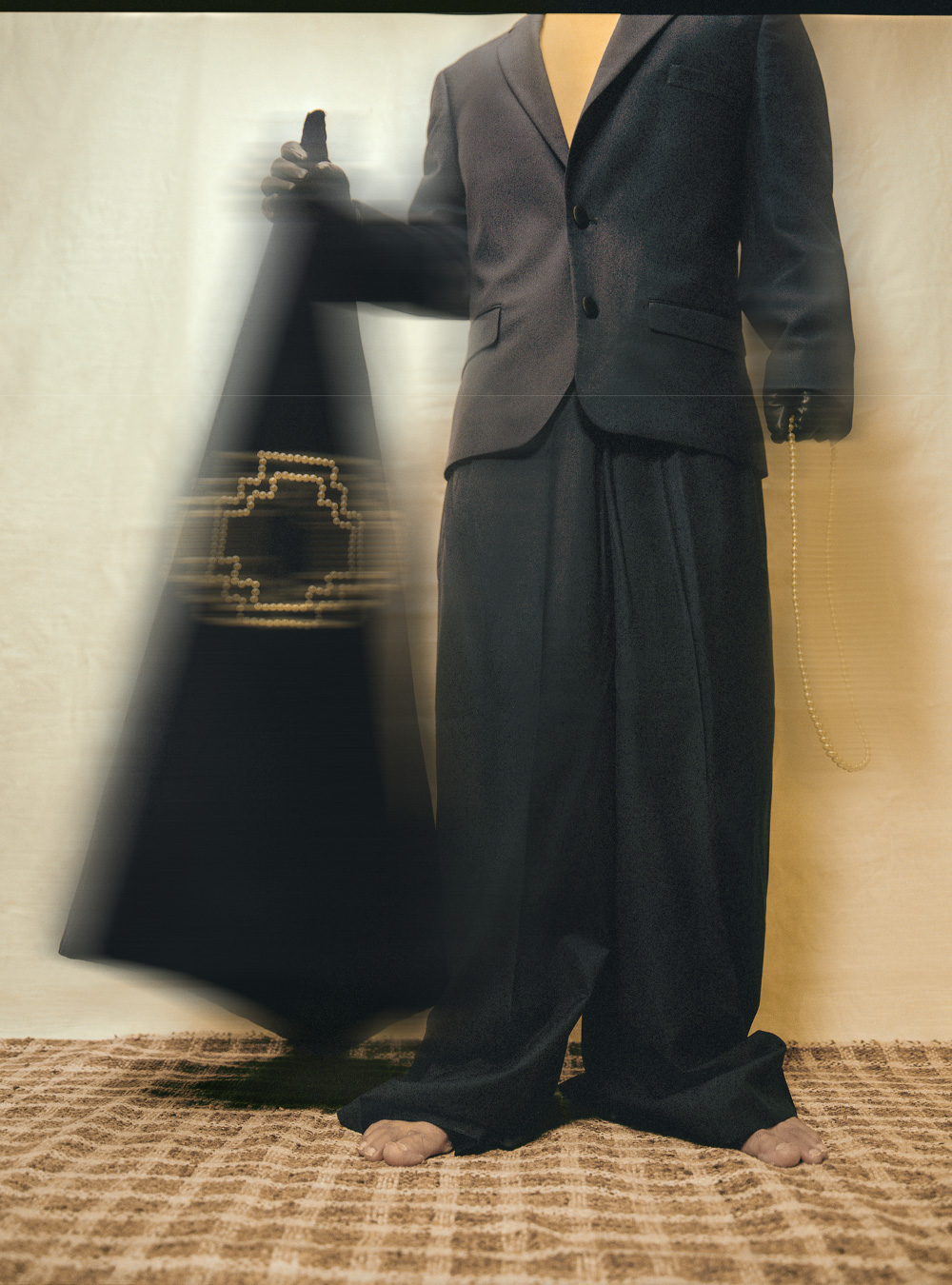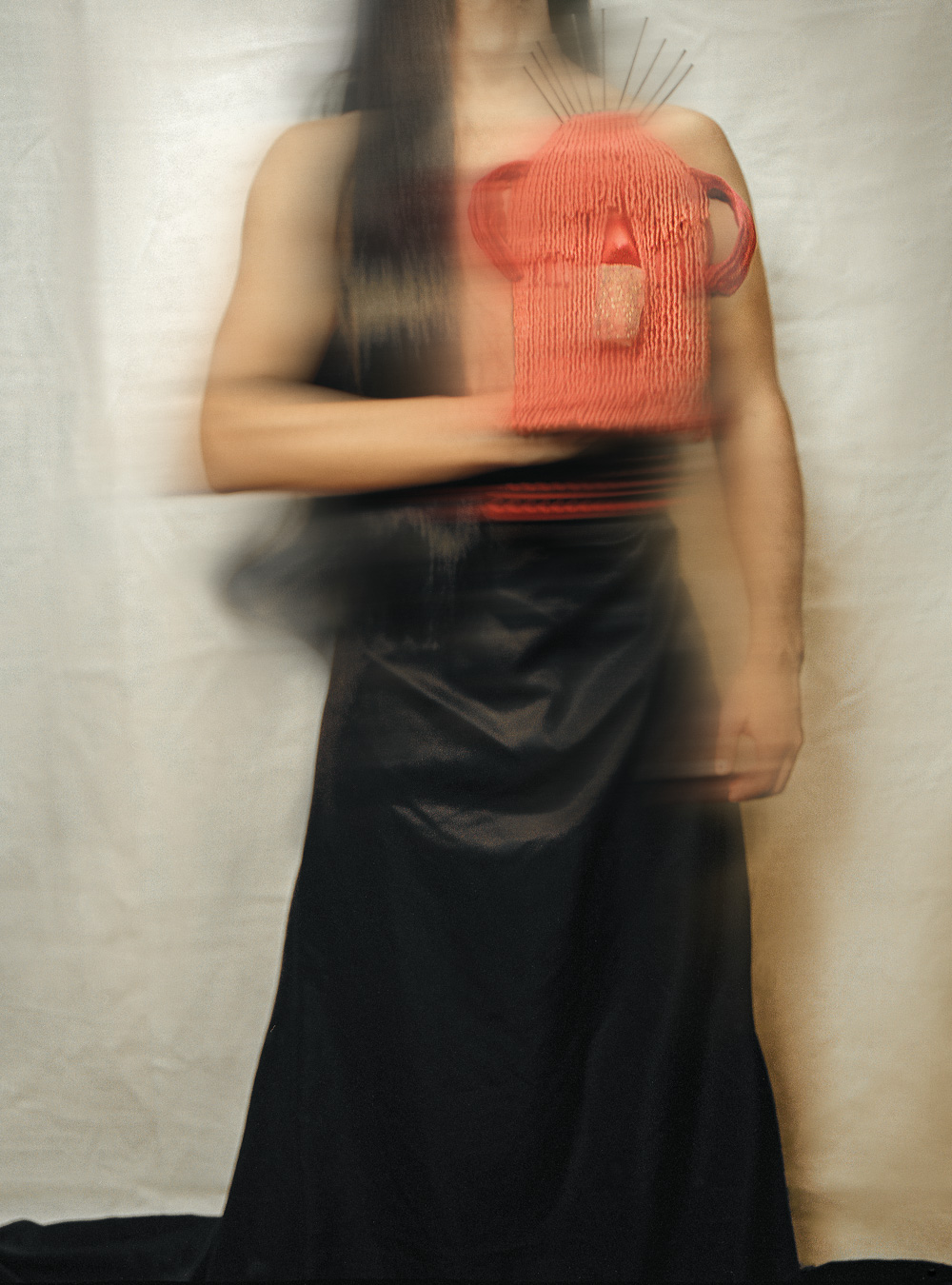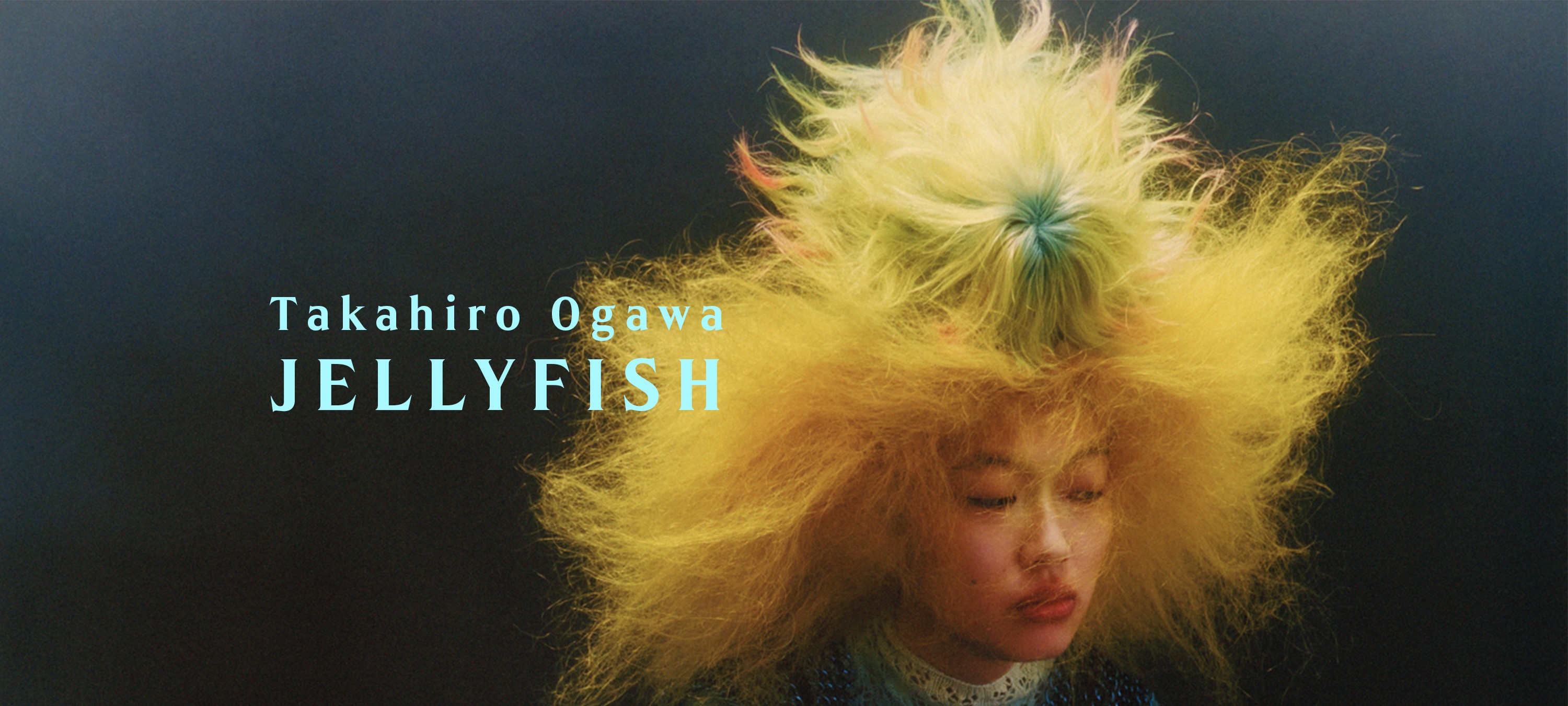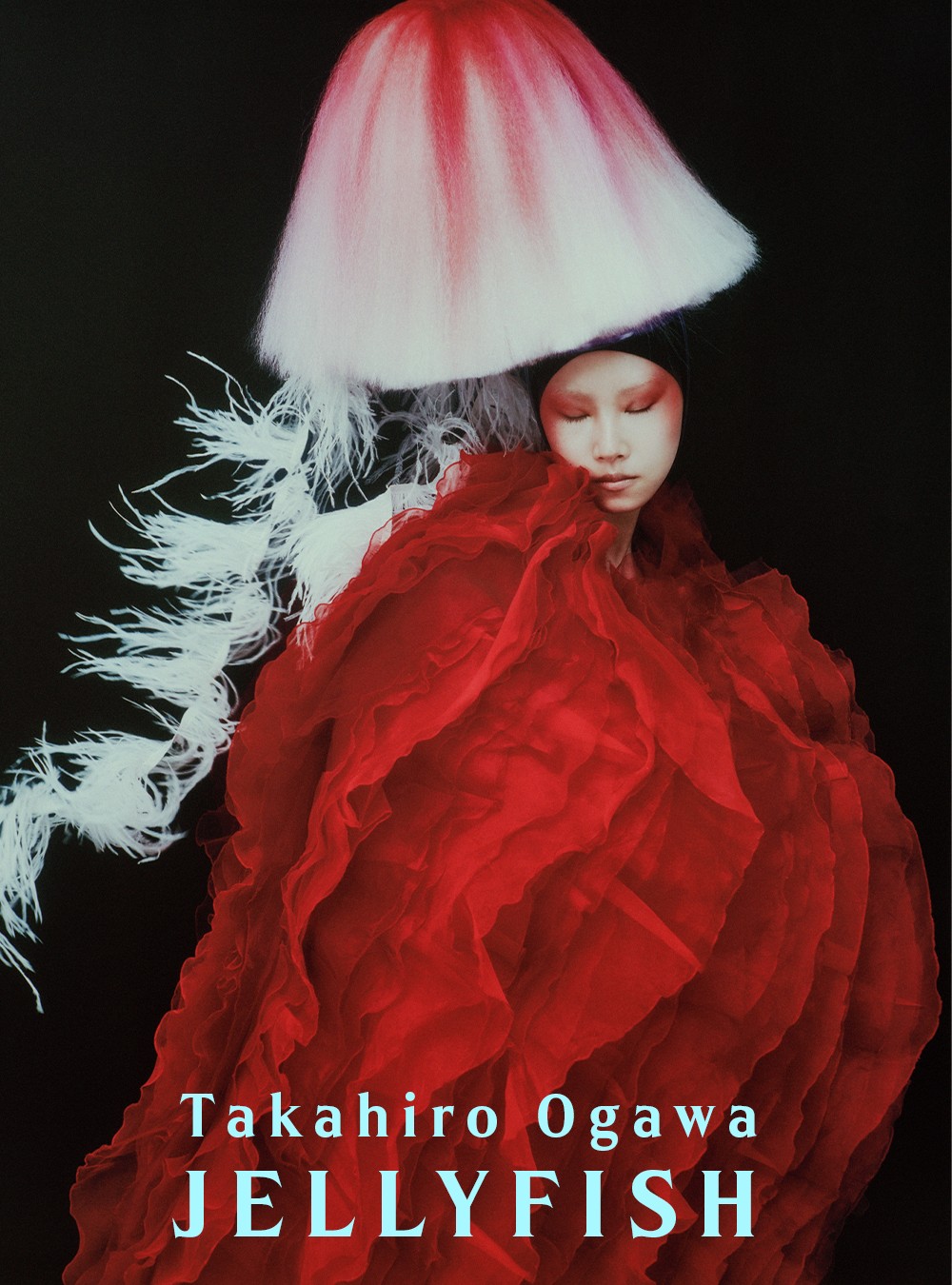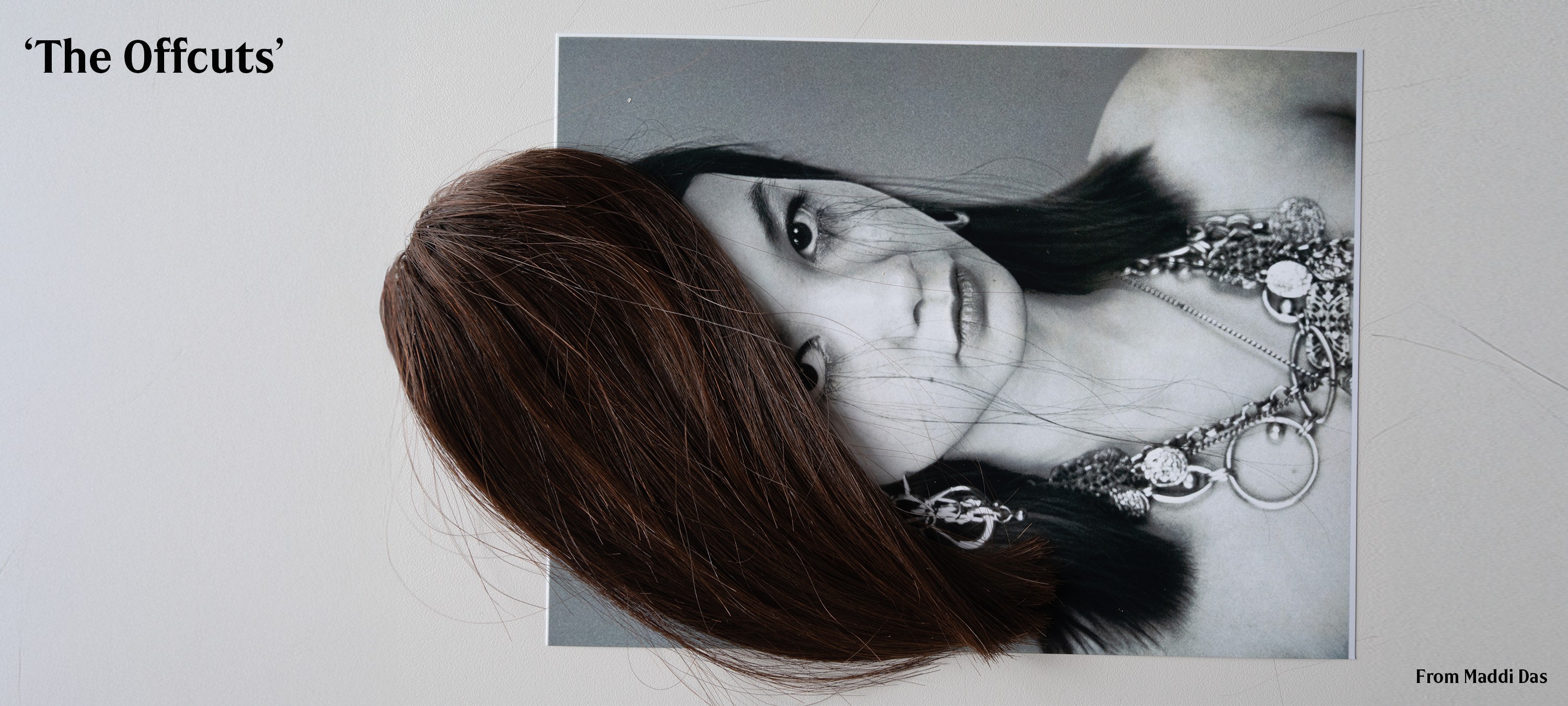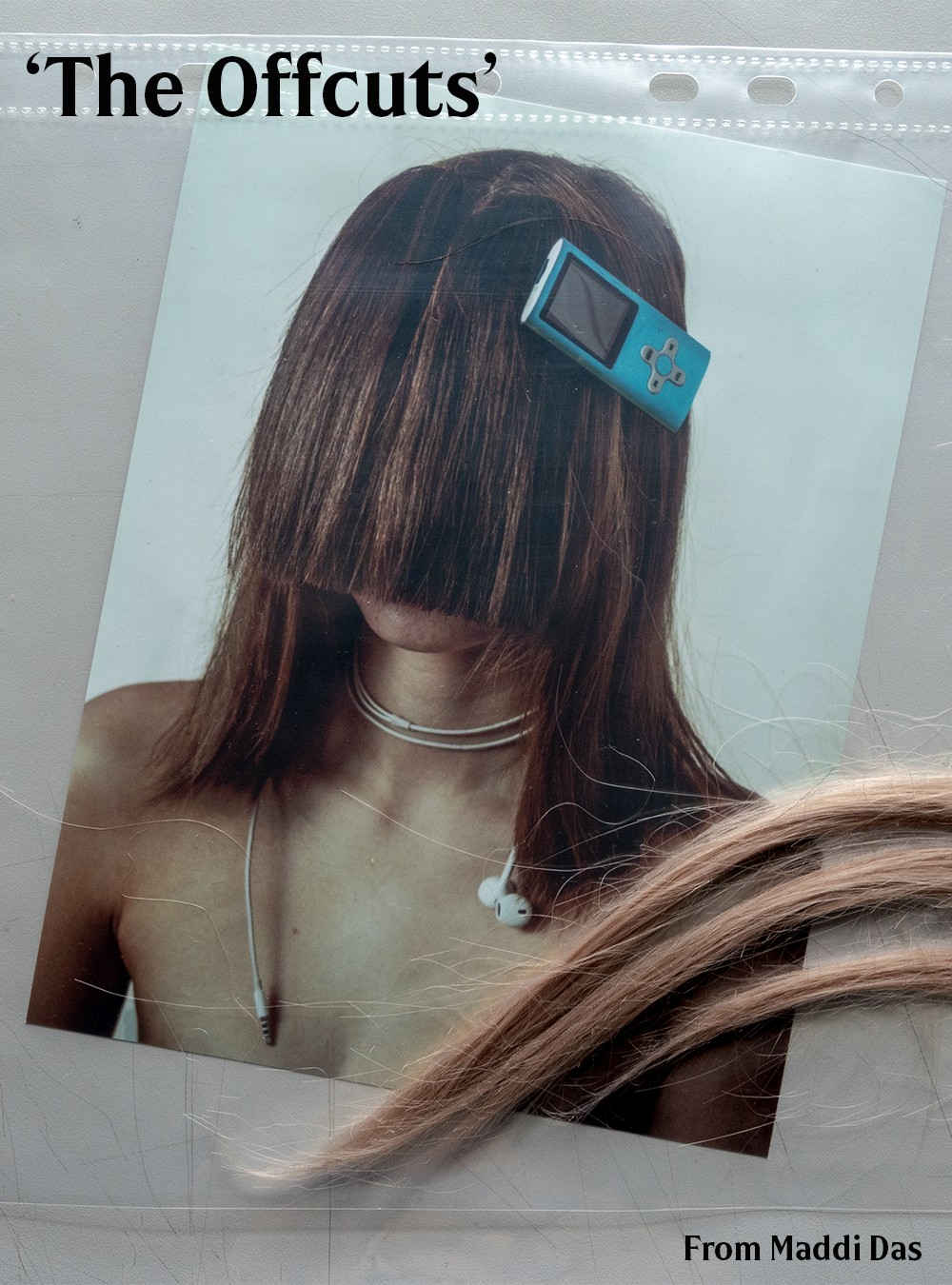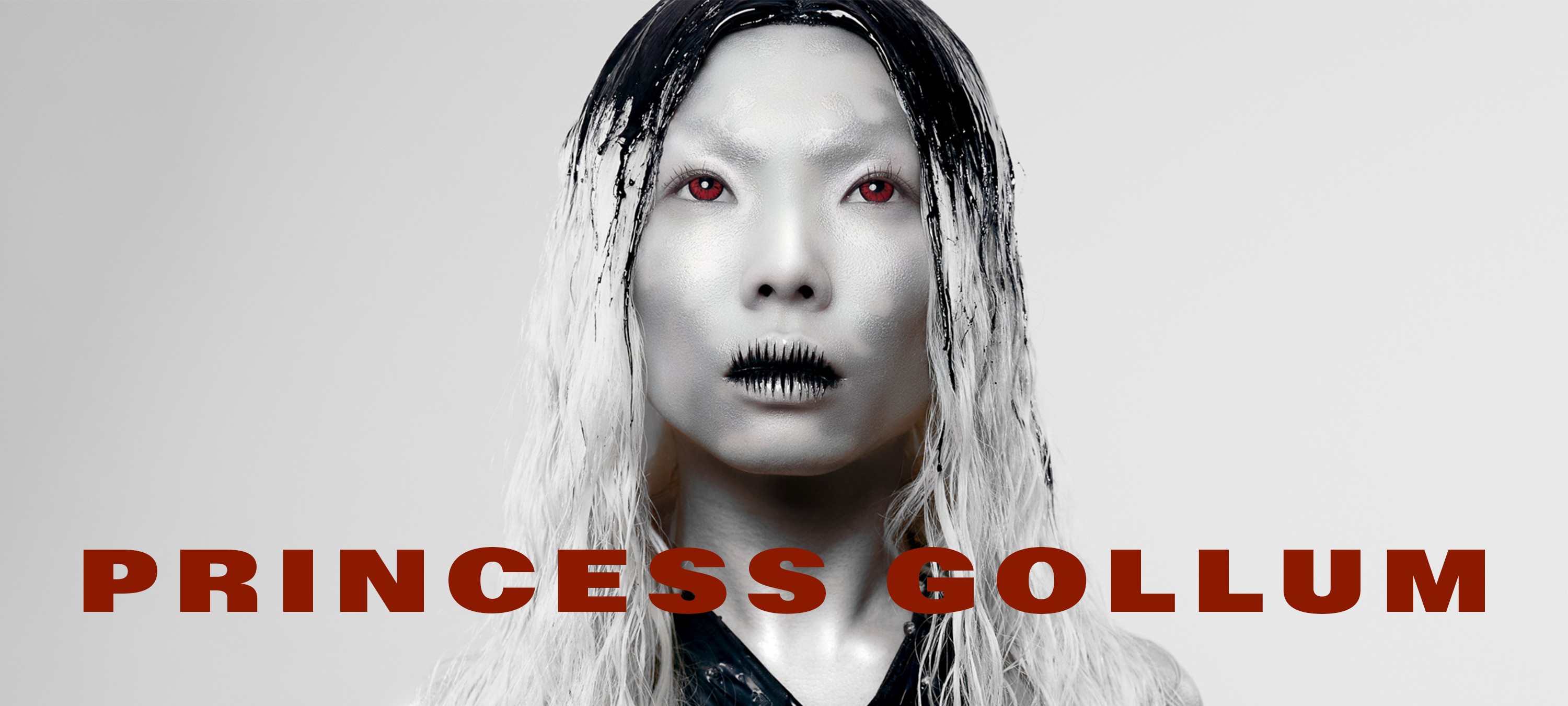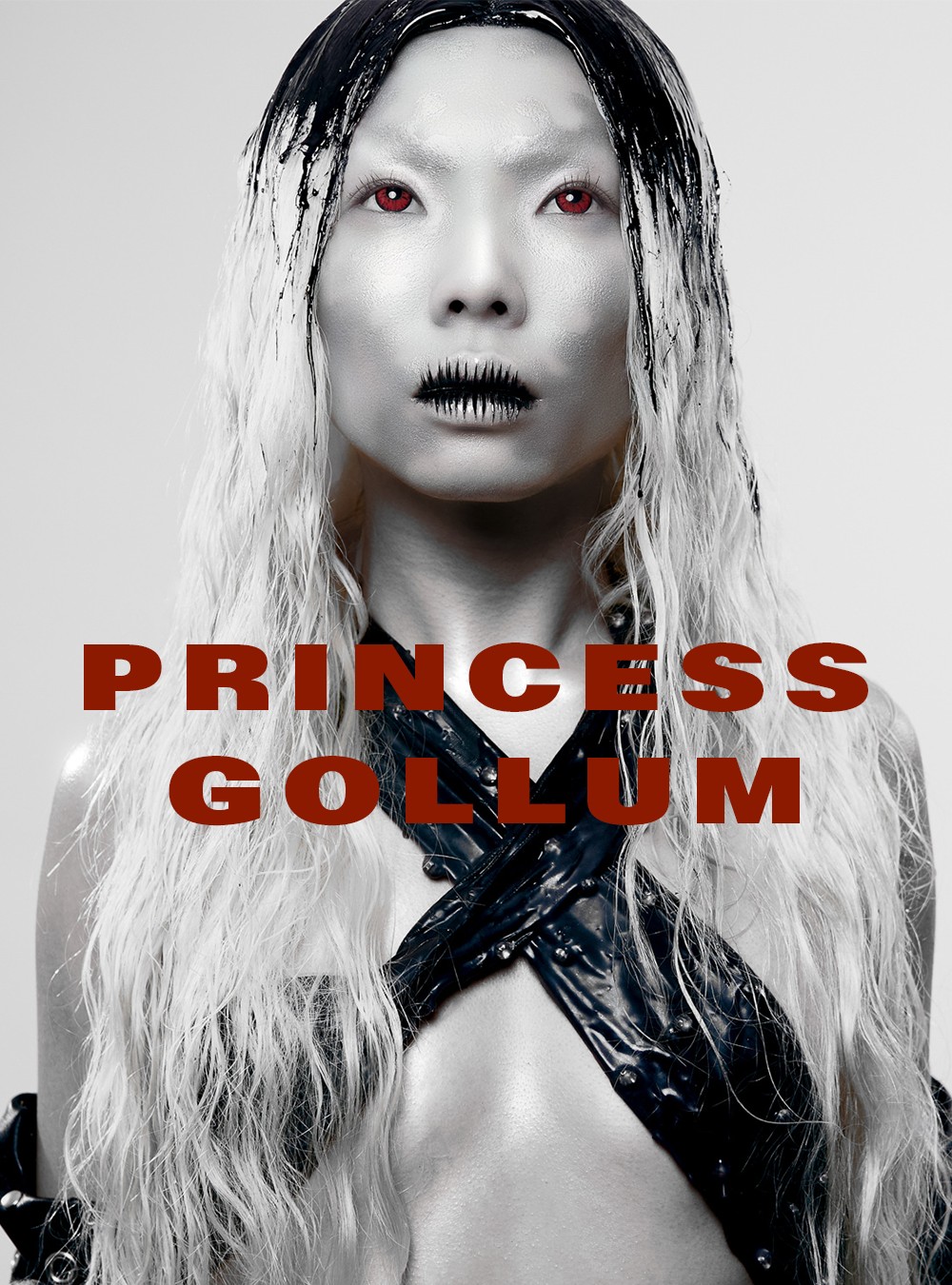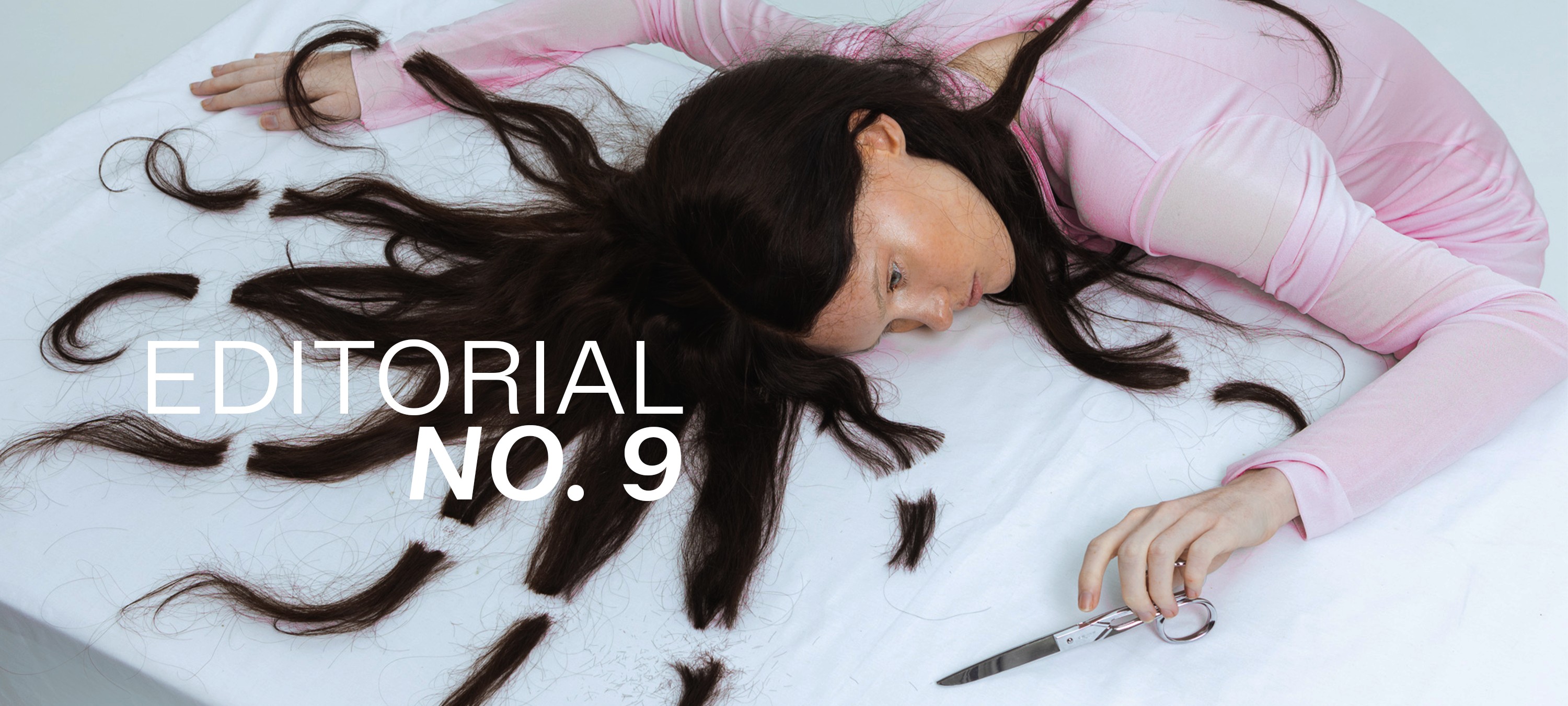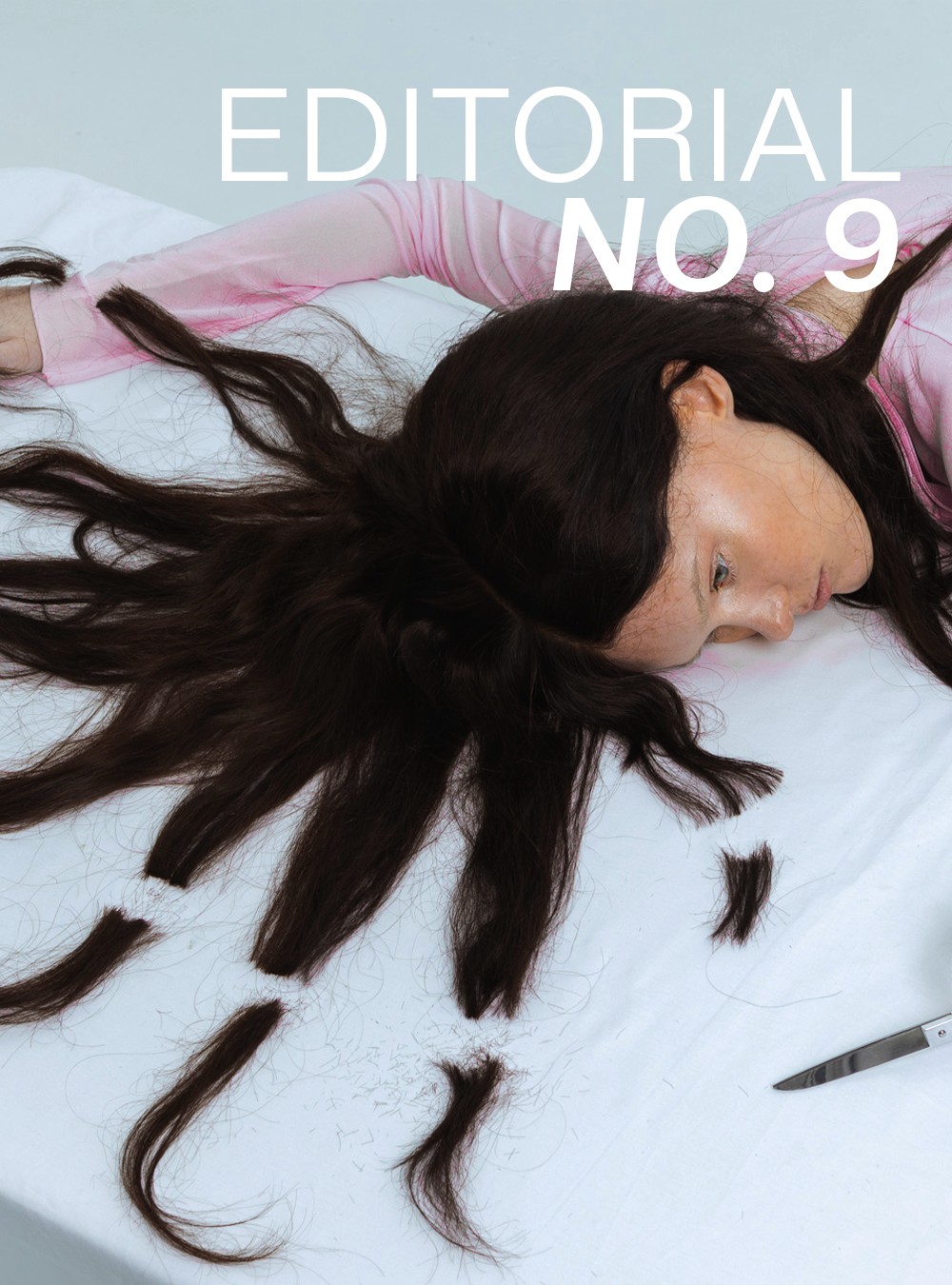ART+CULTURE: Lucho Dávila turns the camera towards himself and his heritage in this introspective self-portrait series, which examines archetypal characters representative of Ecuadorian culture in the wake of Spanish colonialism
Photography + Art Direction: Lucho Dávila
Photography + Retouching Assistant: Julia Alexandra
Stylist: Andrew Christian
Special Thanks: El Inca Plebeyo Londres
Lucho Dávila digs into his Spanish and Ecuadorian heritage in this autoethnographic exploration, named after a traditional Easter dish that mixes Spanish religious beliefs with Indigenous tradition in Ecuador. Through hand-made masks and the self portraits of “a mixed heritage mestizo,” Fanesca interprets Ecuadorian traditional characters that appeared after the colonial period. The long black wig that appears throughout is a tribute to the hairstyle indigenous people wear through all their lives.
I: DIABLO HUMA
A representation of the devil that appeared after the Spanish colony imported religion into Ecuador.
(at left)
II: MAMA NEGRA
A traditional character that honors the Virgin of Volcanoes and gives way to its mysterious protagonist: a man dressed as a woman with and his face painted black. According to the Ecuadorian Ministry of Tourism, the Mama Negra also celebrates the liberation of the Afro-Ecuadorian community.
- ANTHROPOLOGY OF HAIR
- ANTHROPOLOGY OF HAIR
- ANTHROPOLOGY OF HAIR
- ANTHROPOLOGY OF HAIR
- ANTHROPOLOGY OF HAIR
